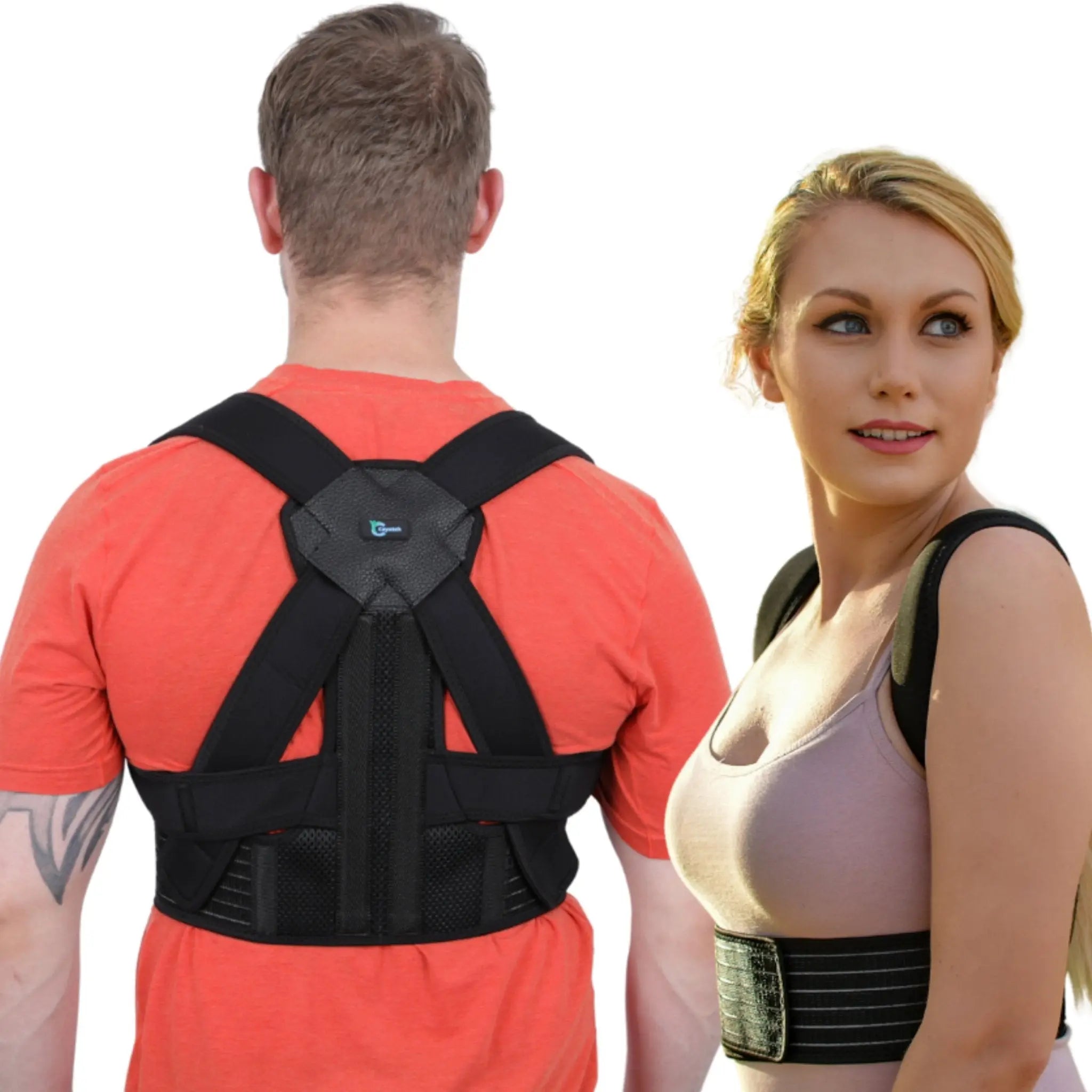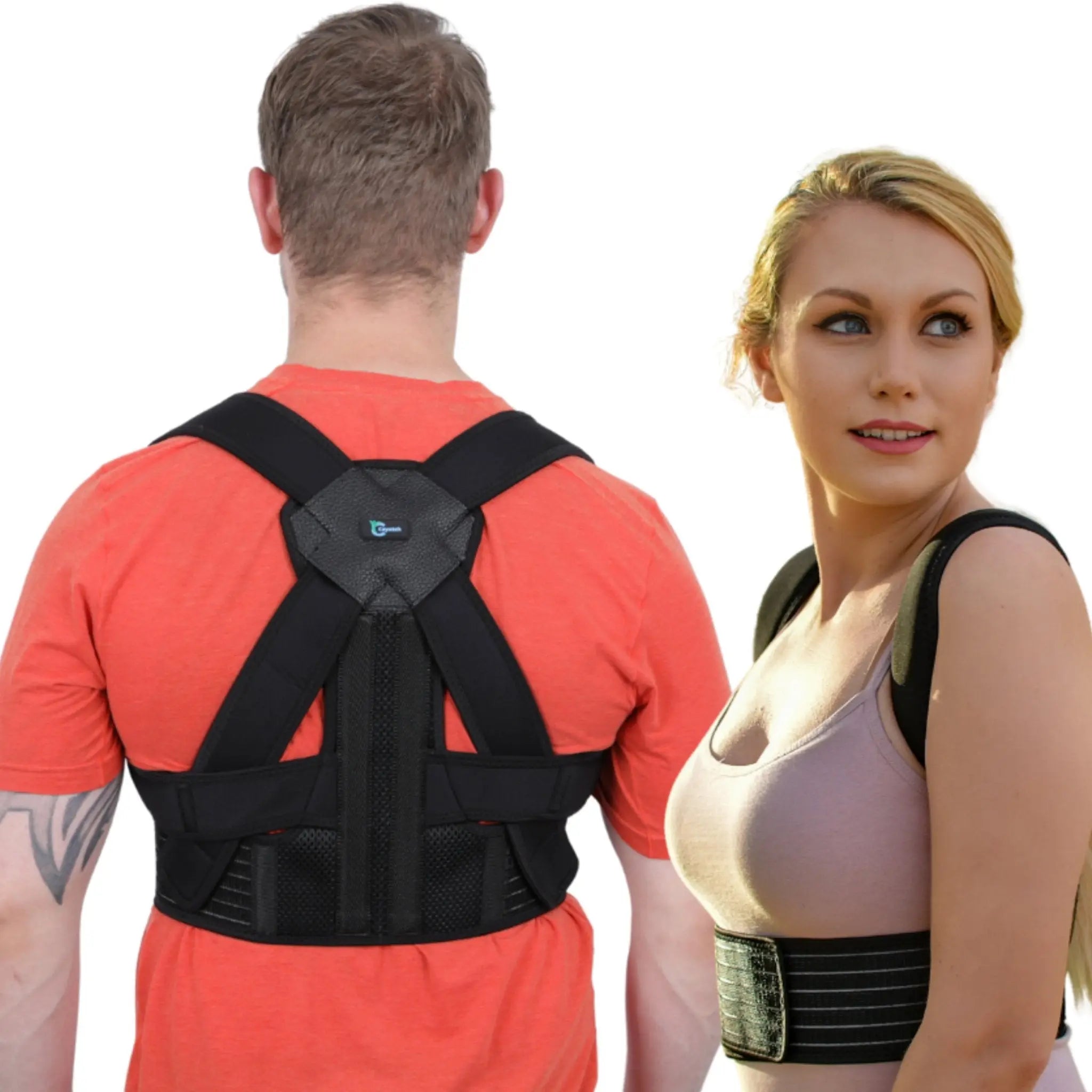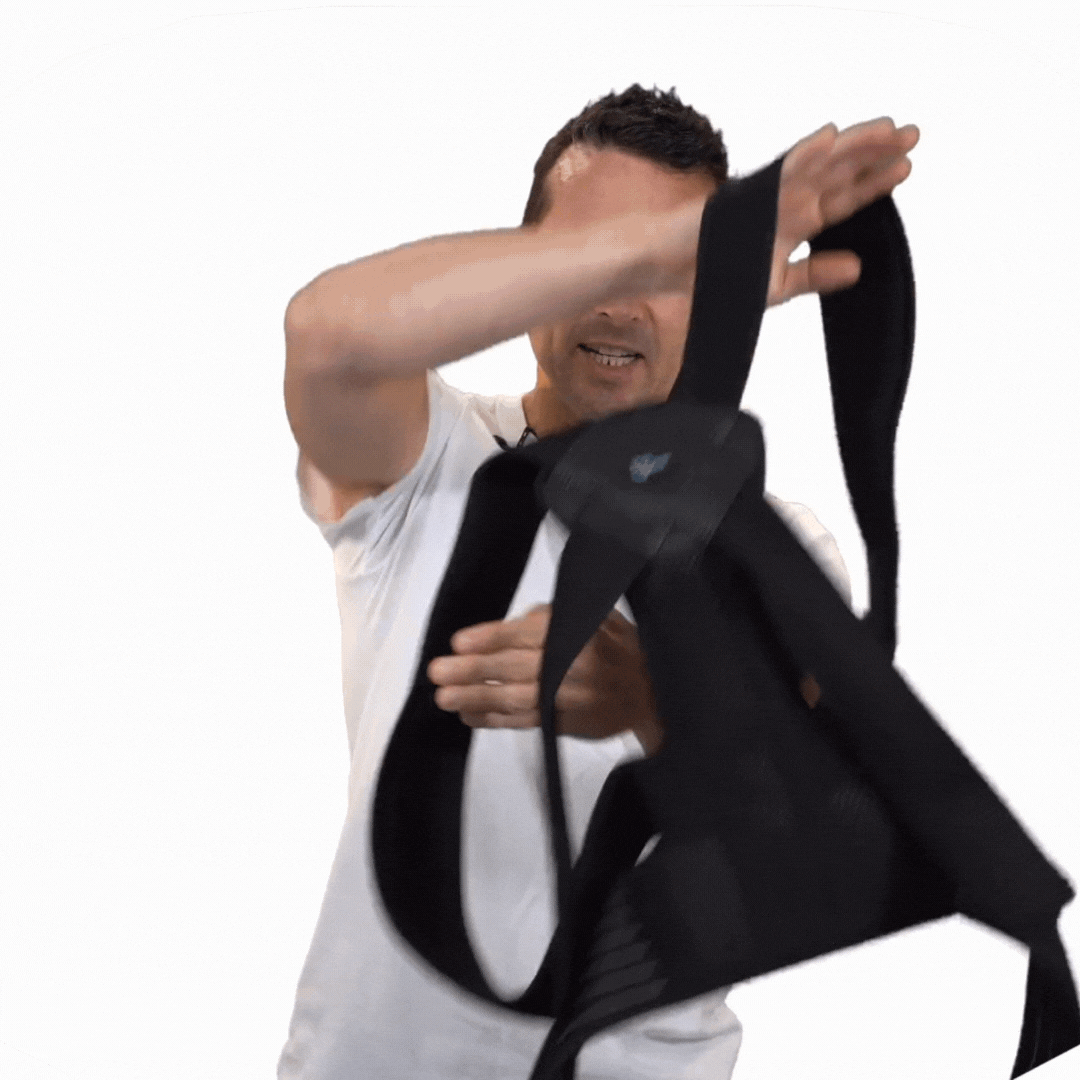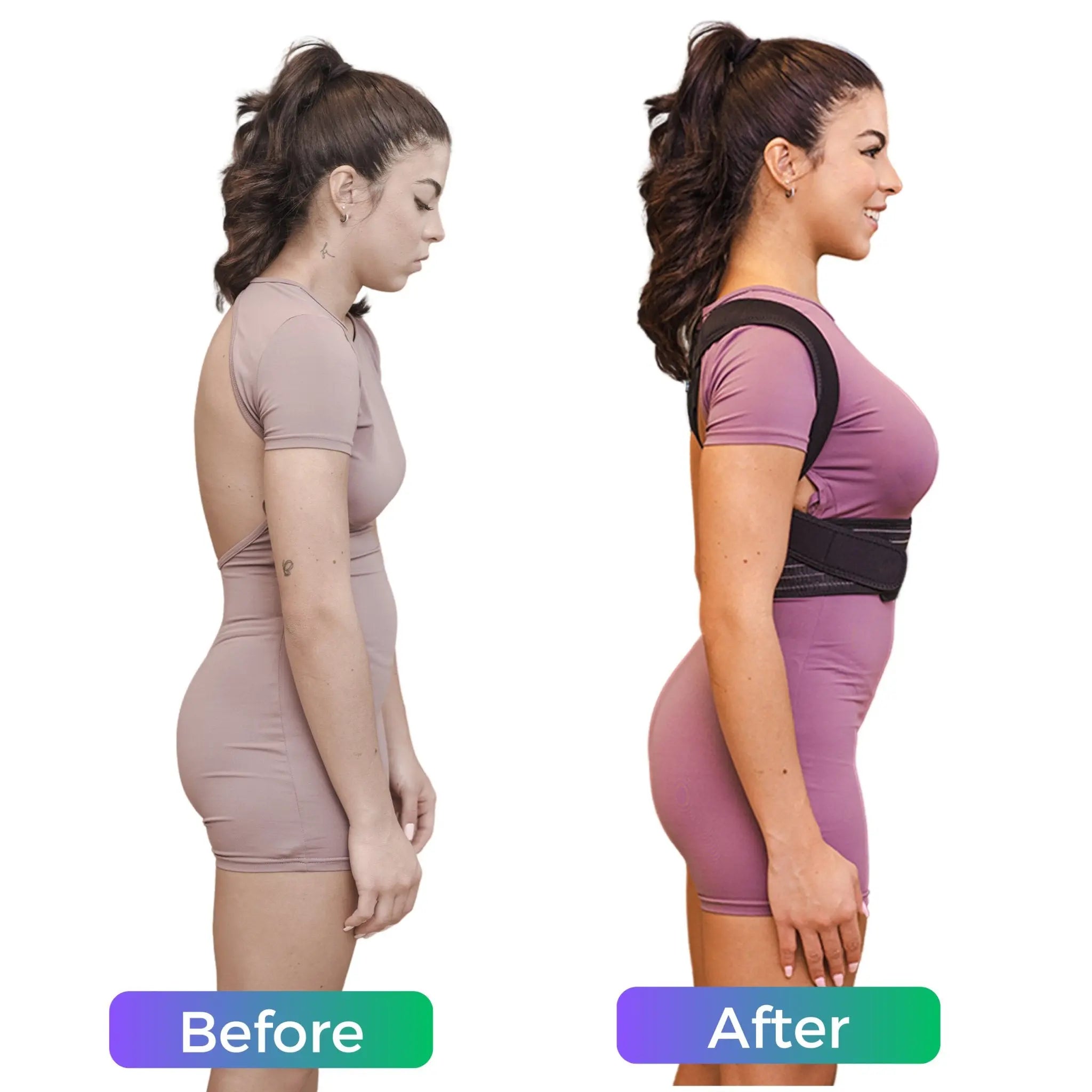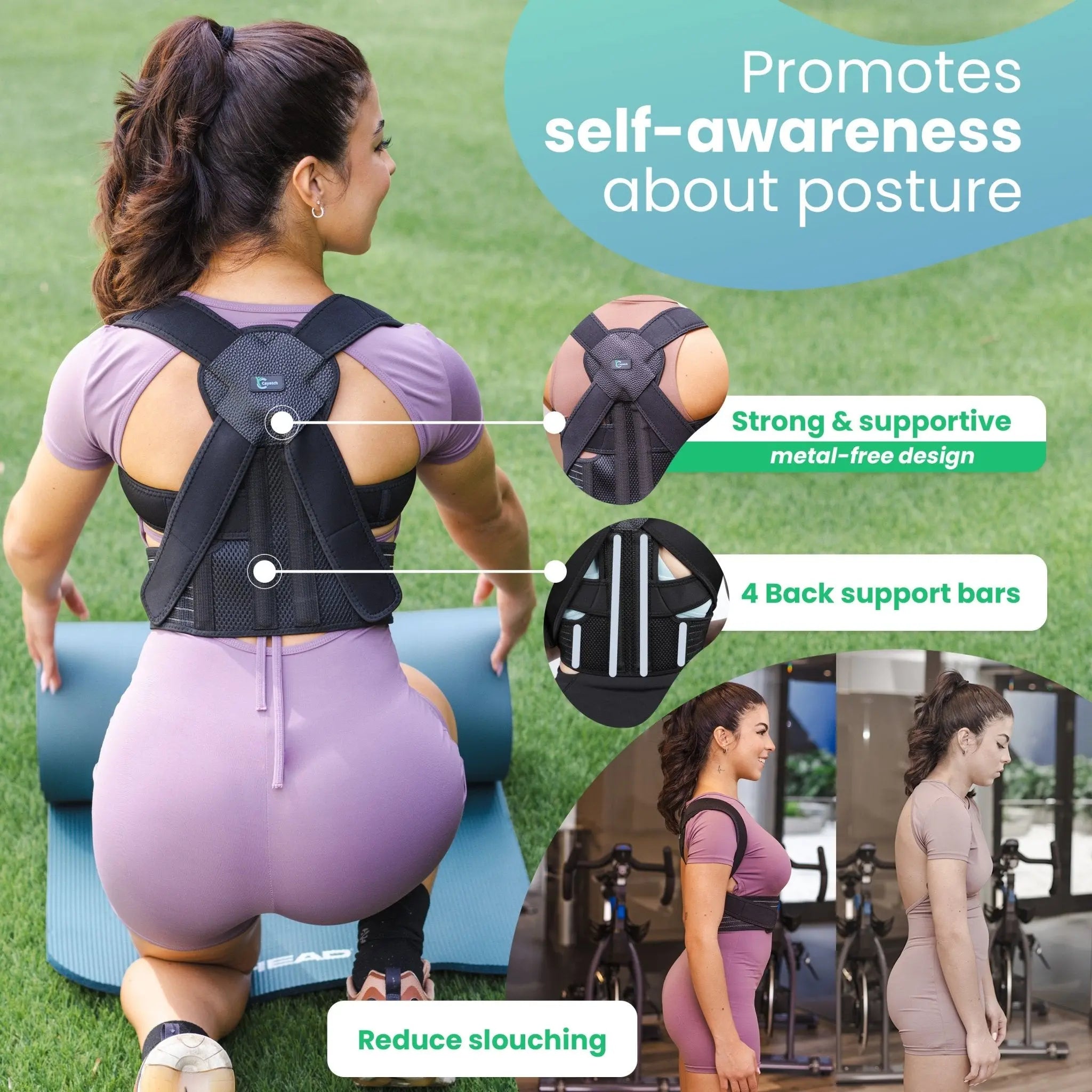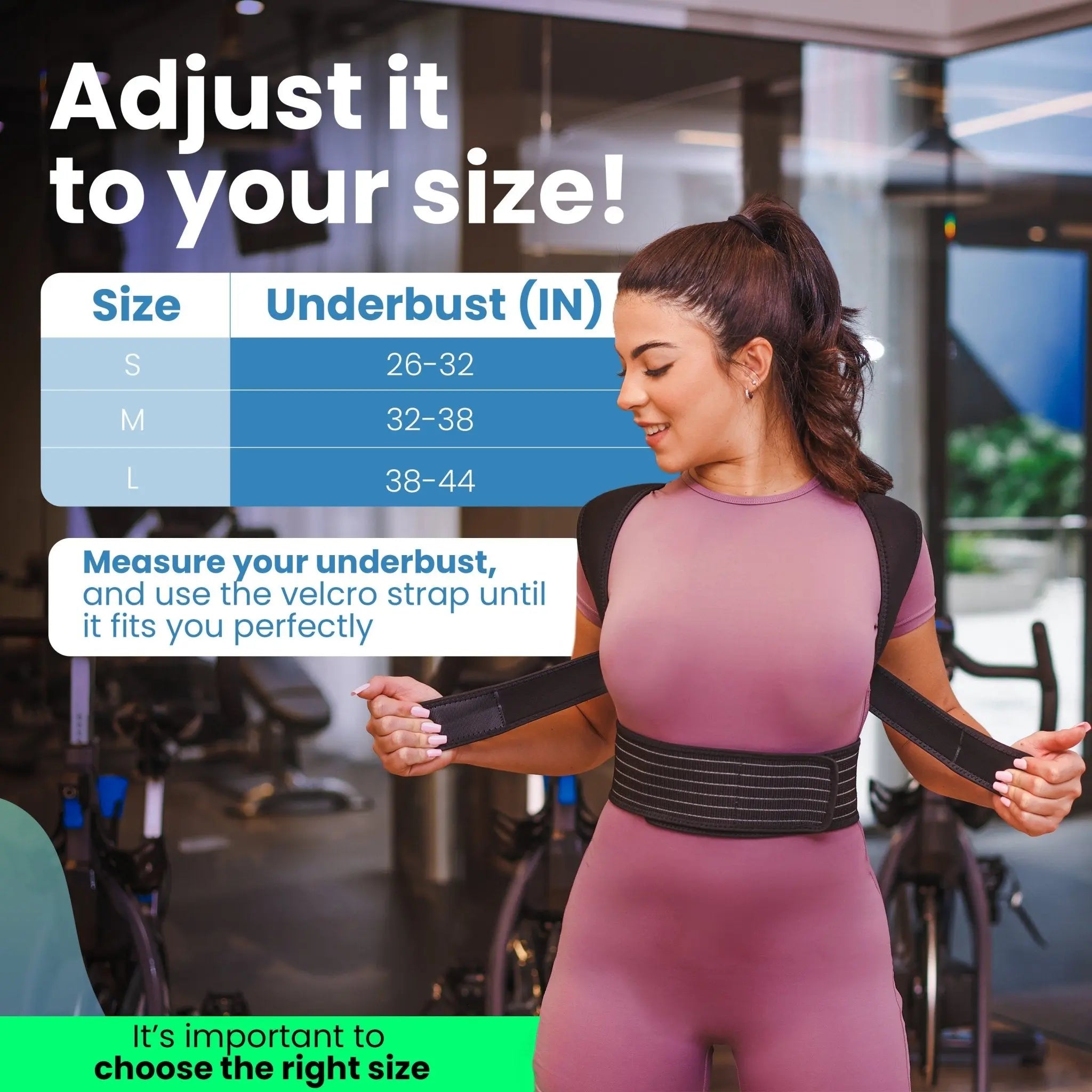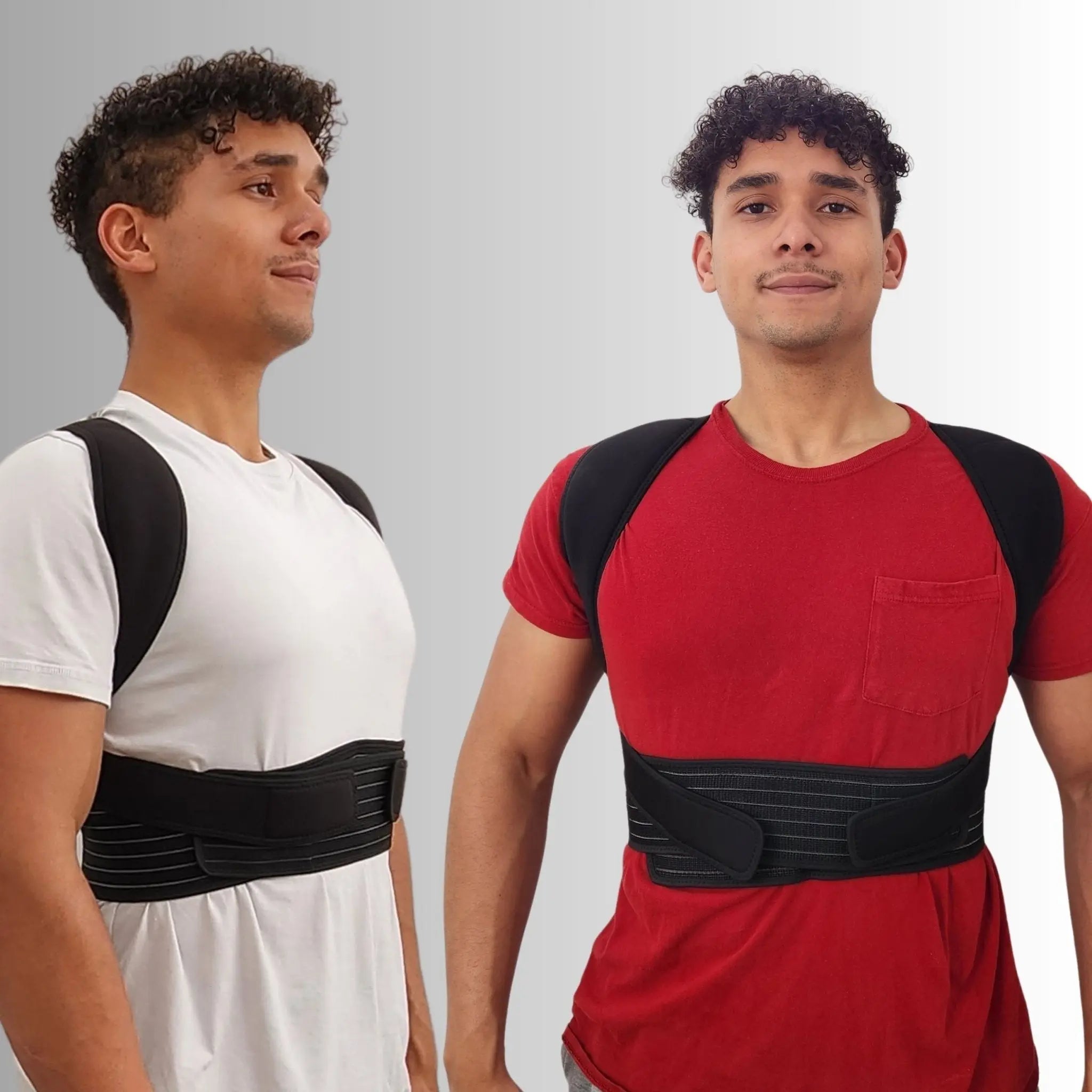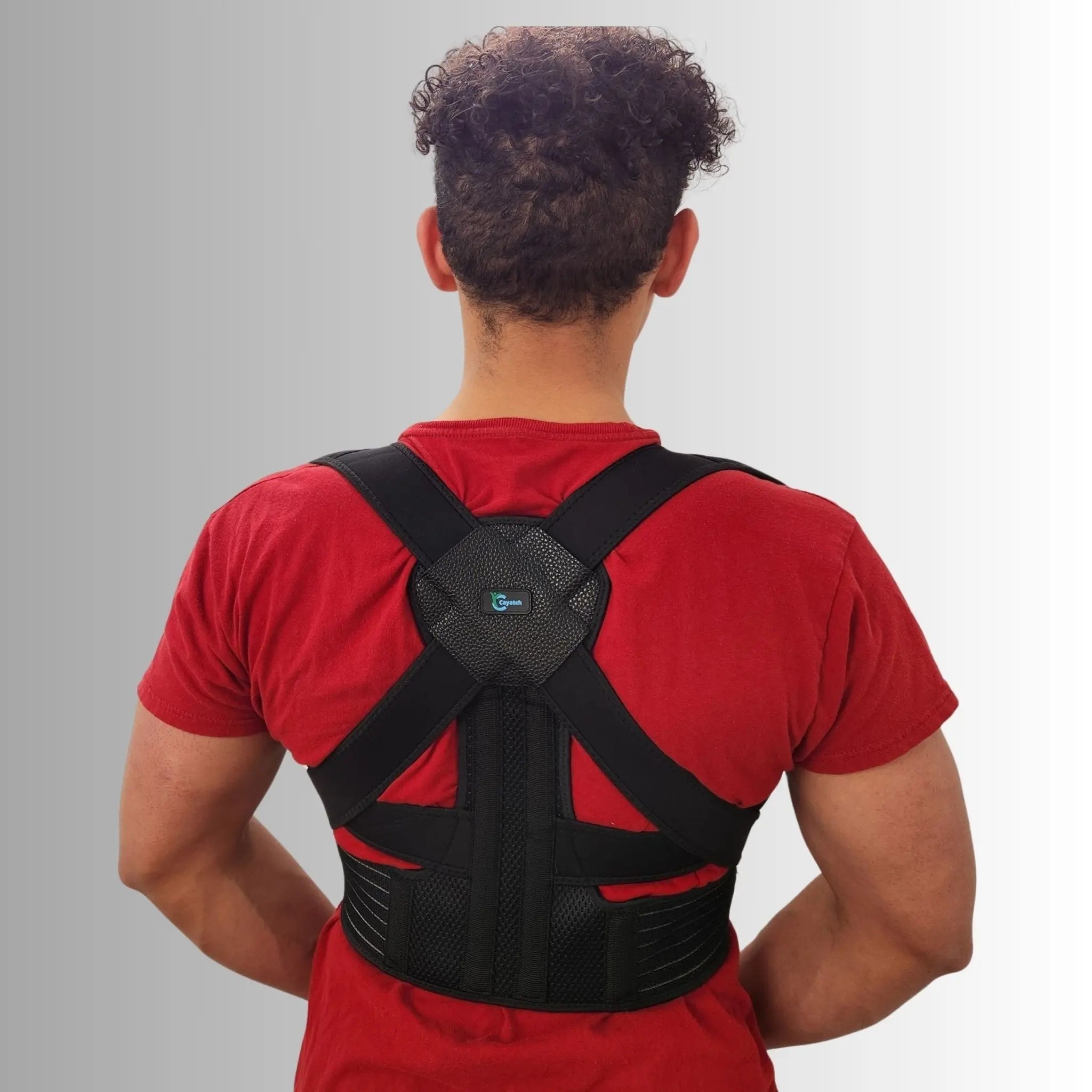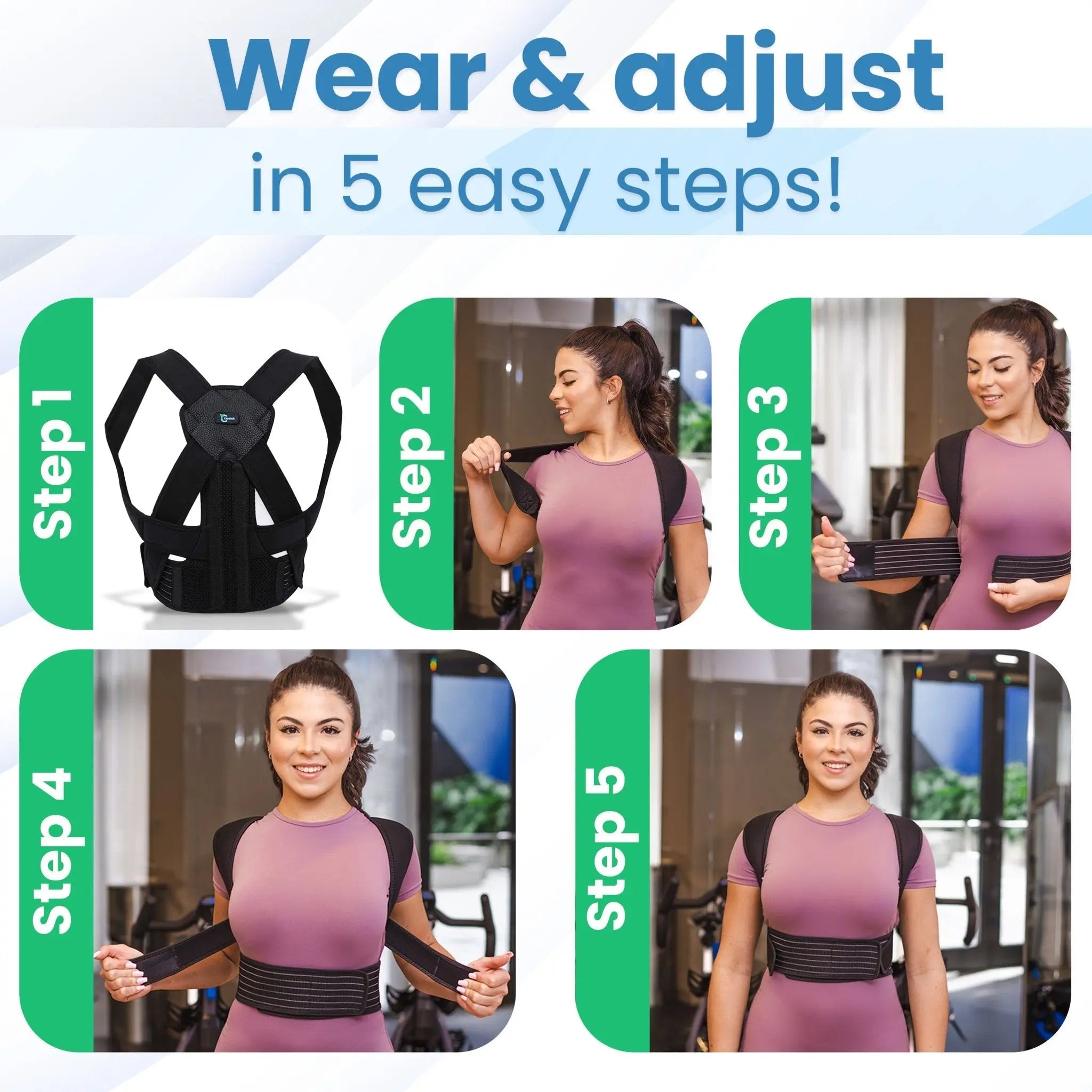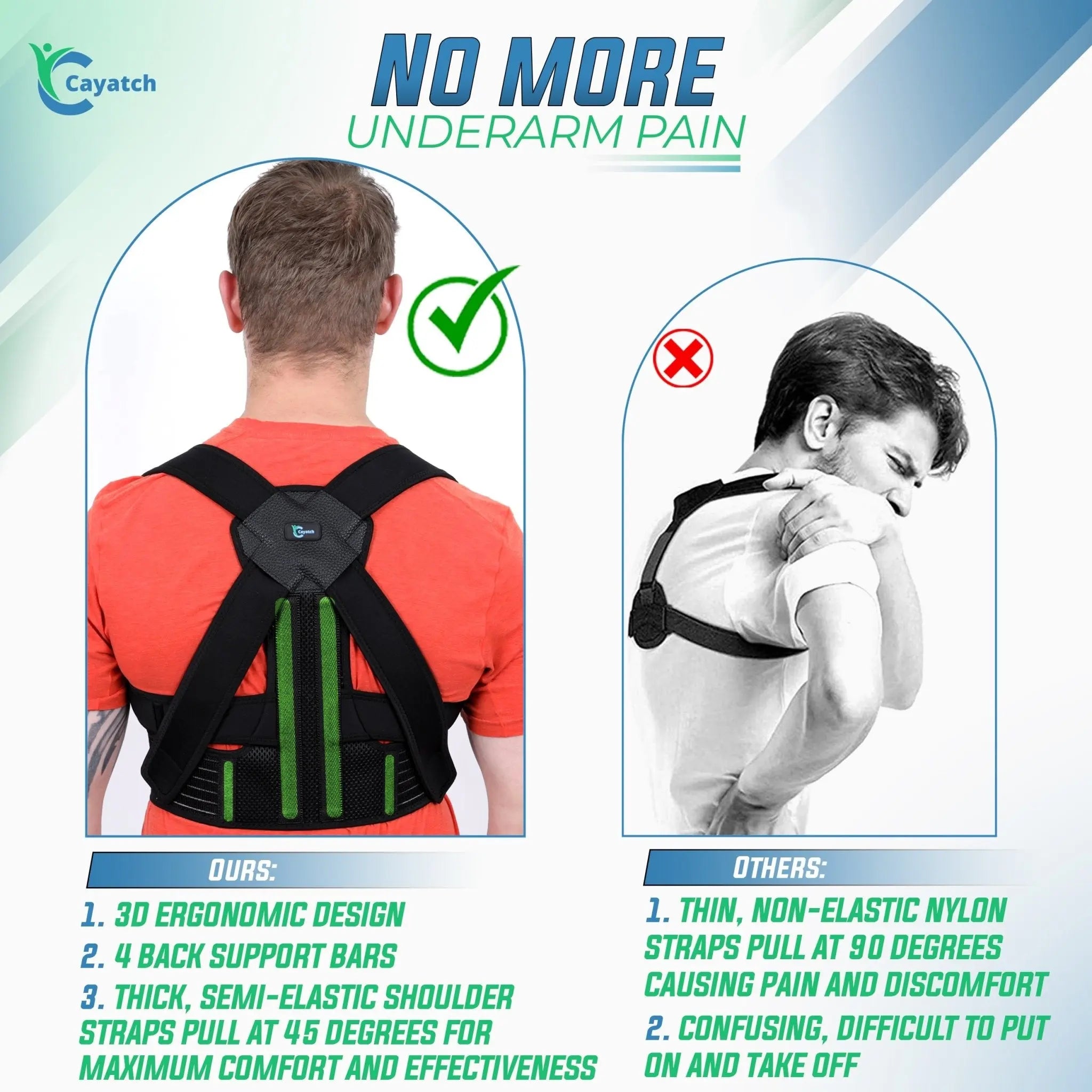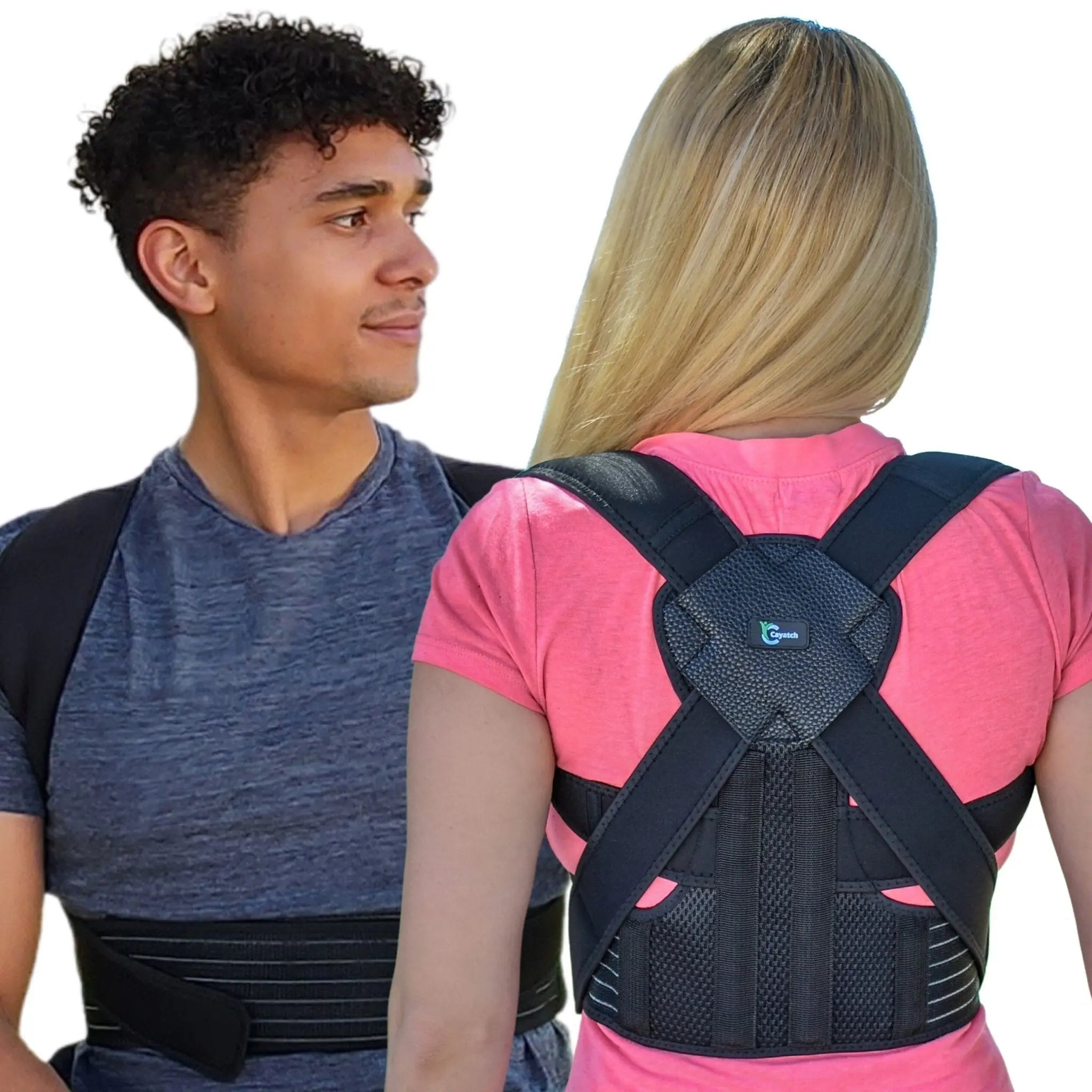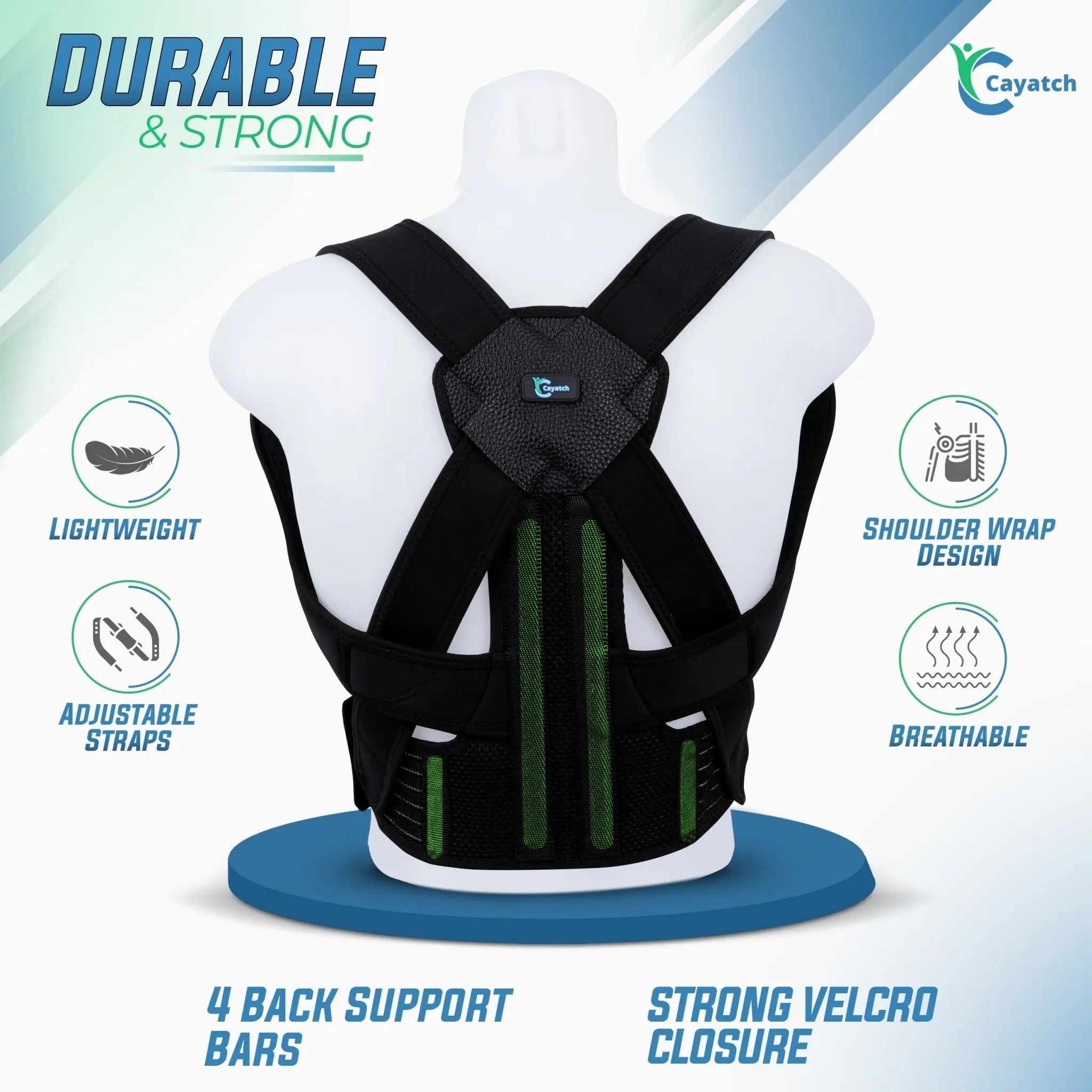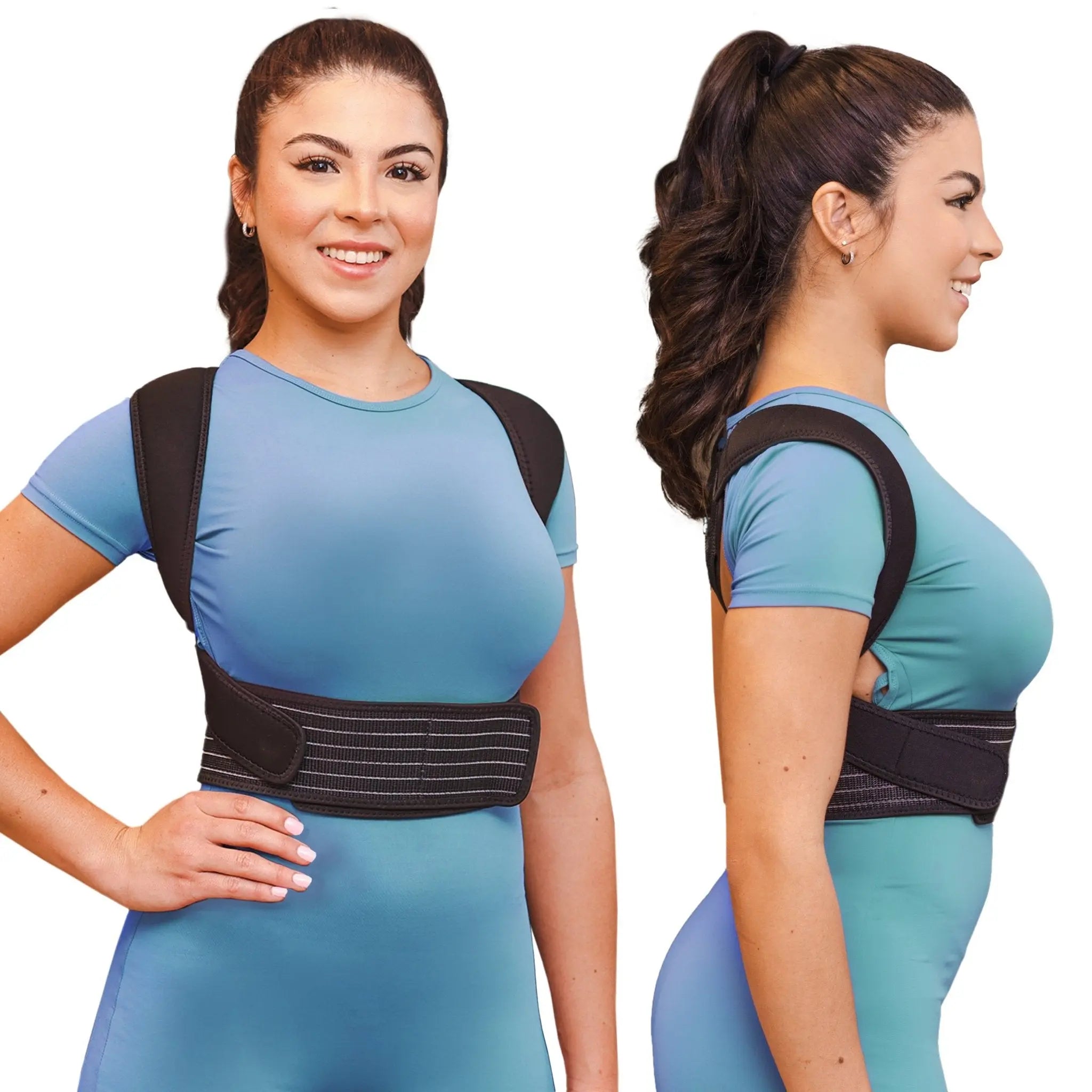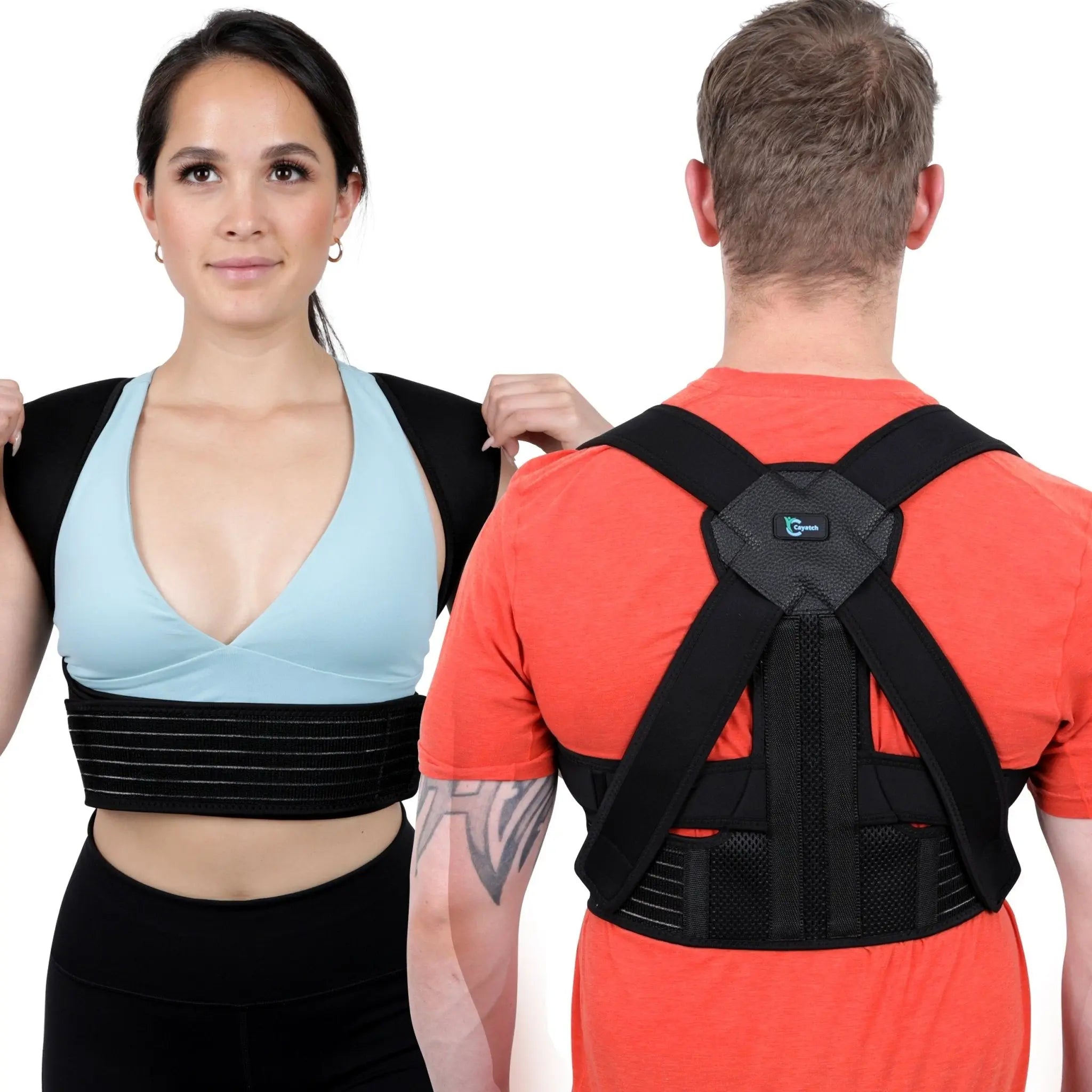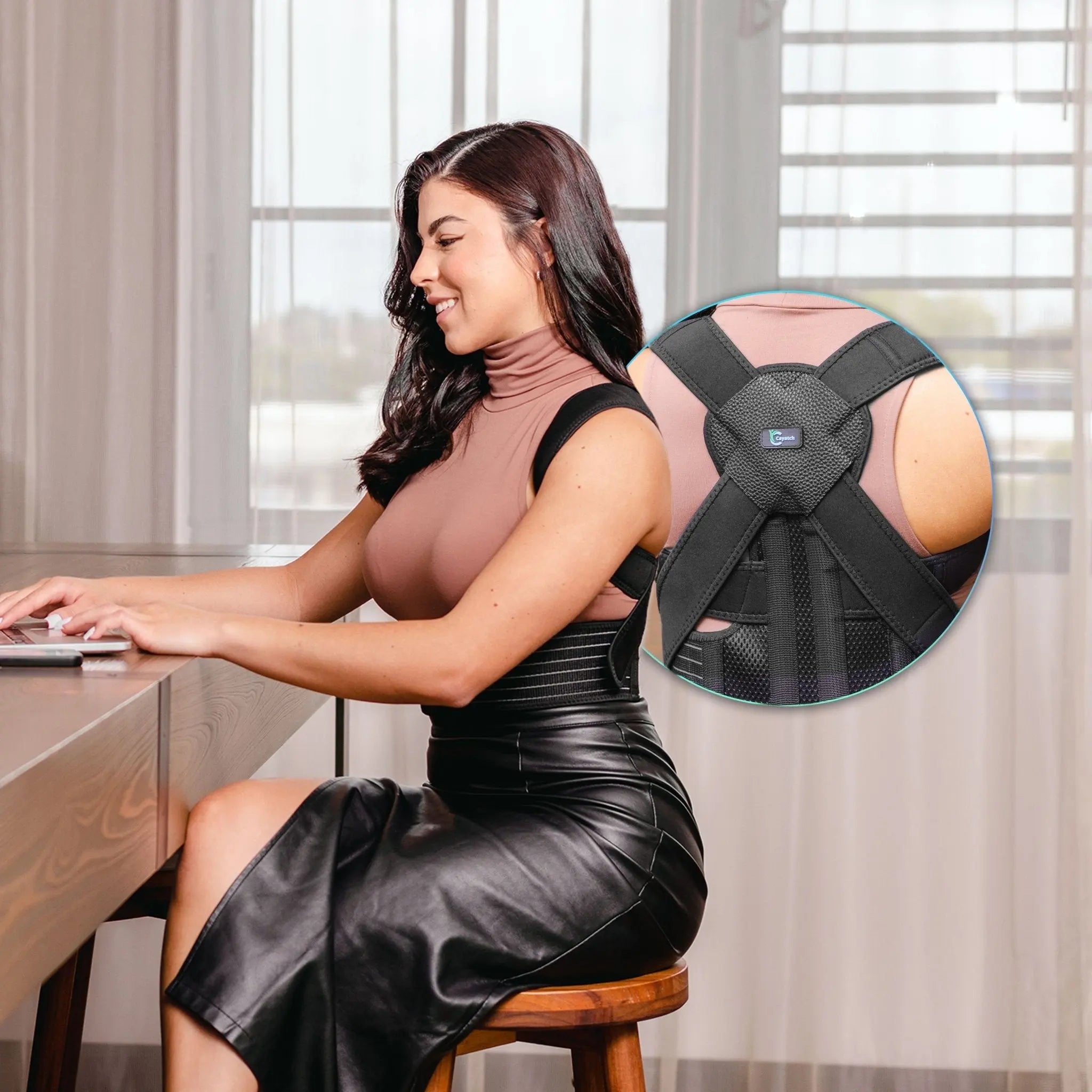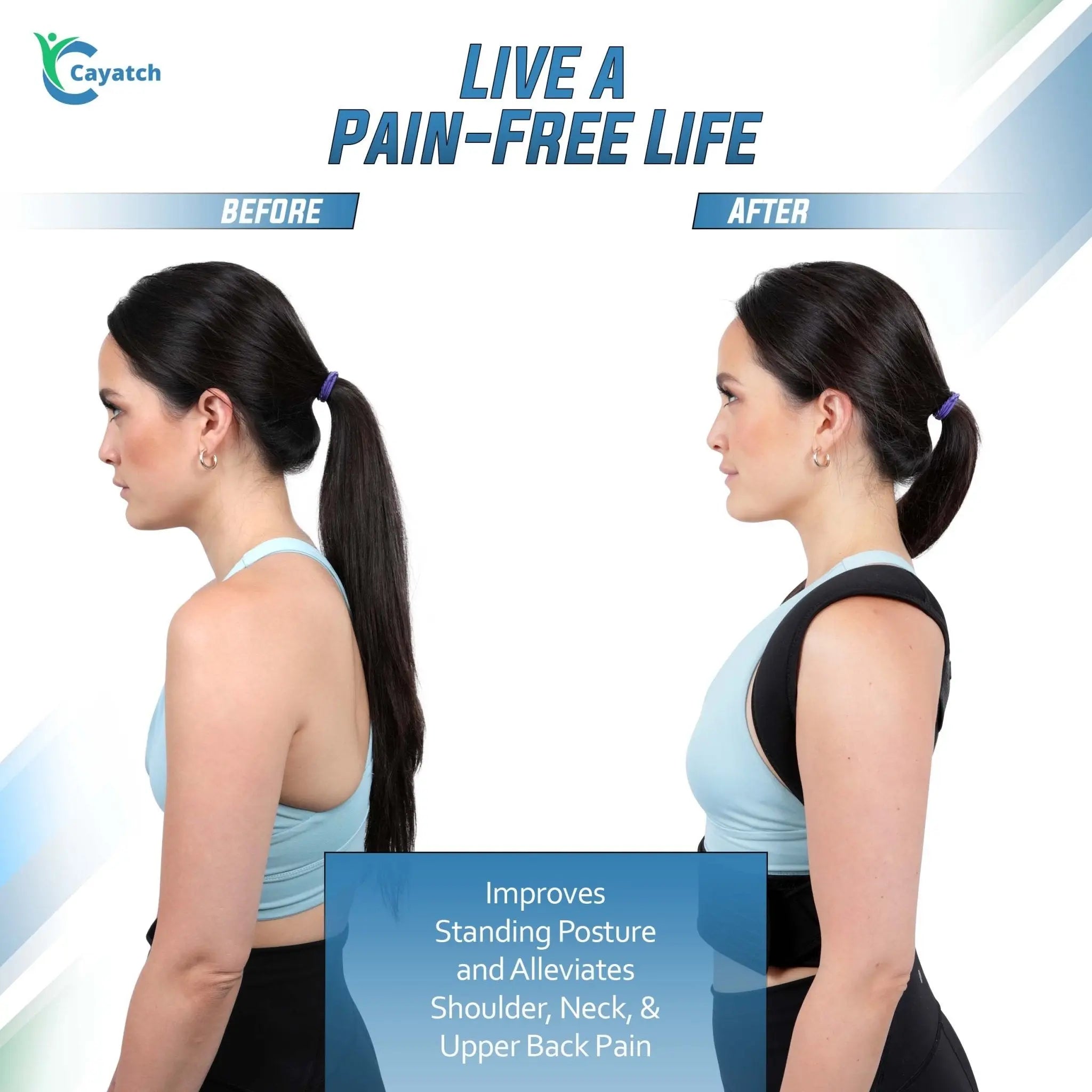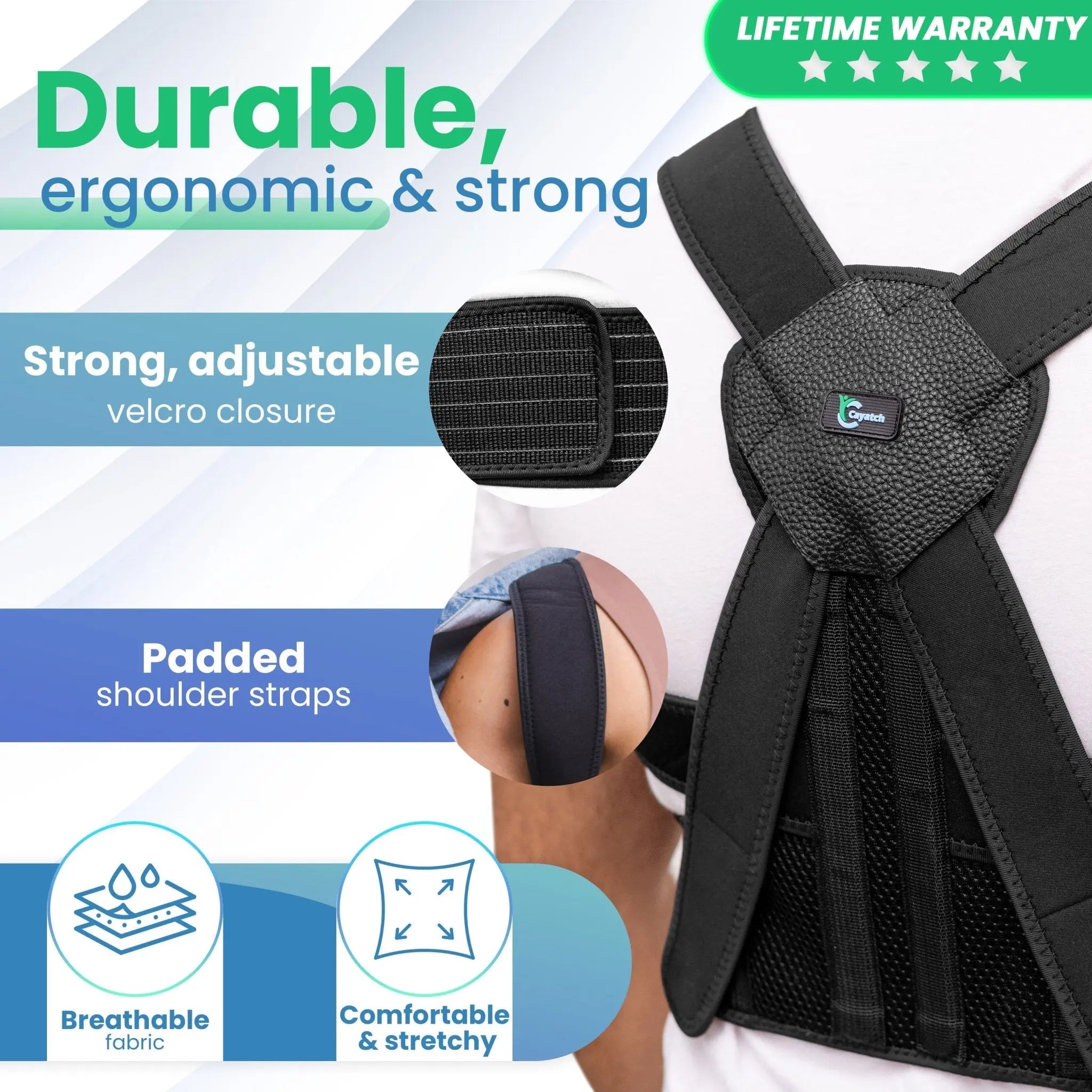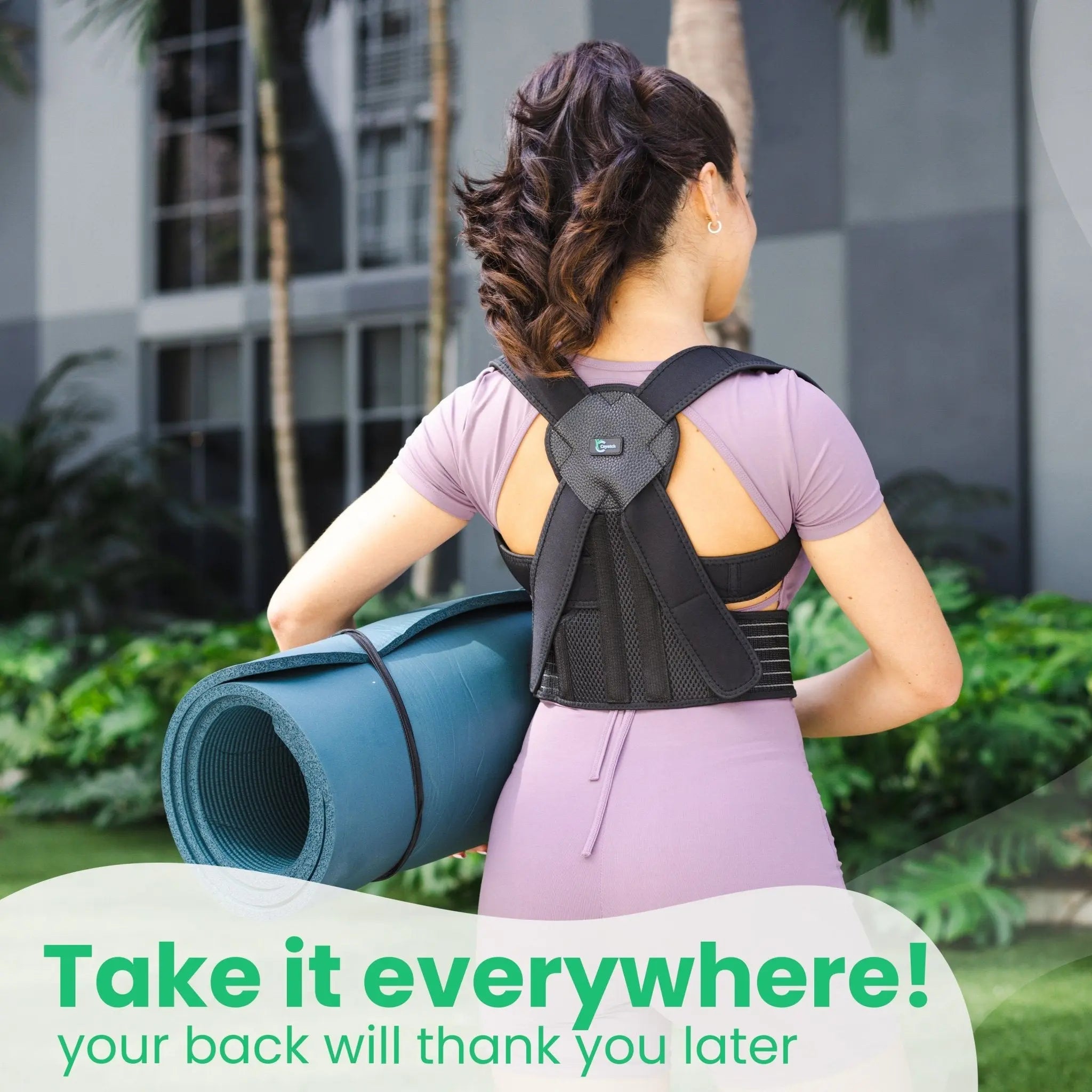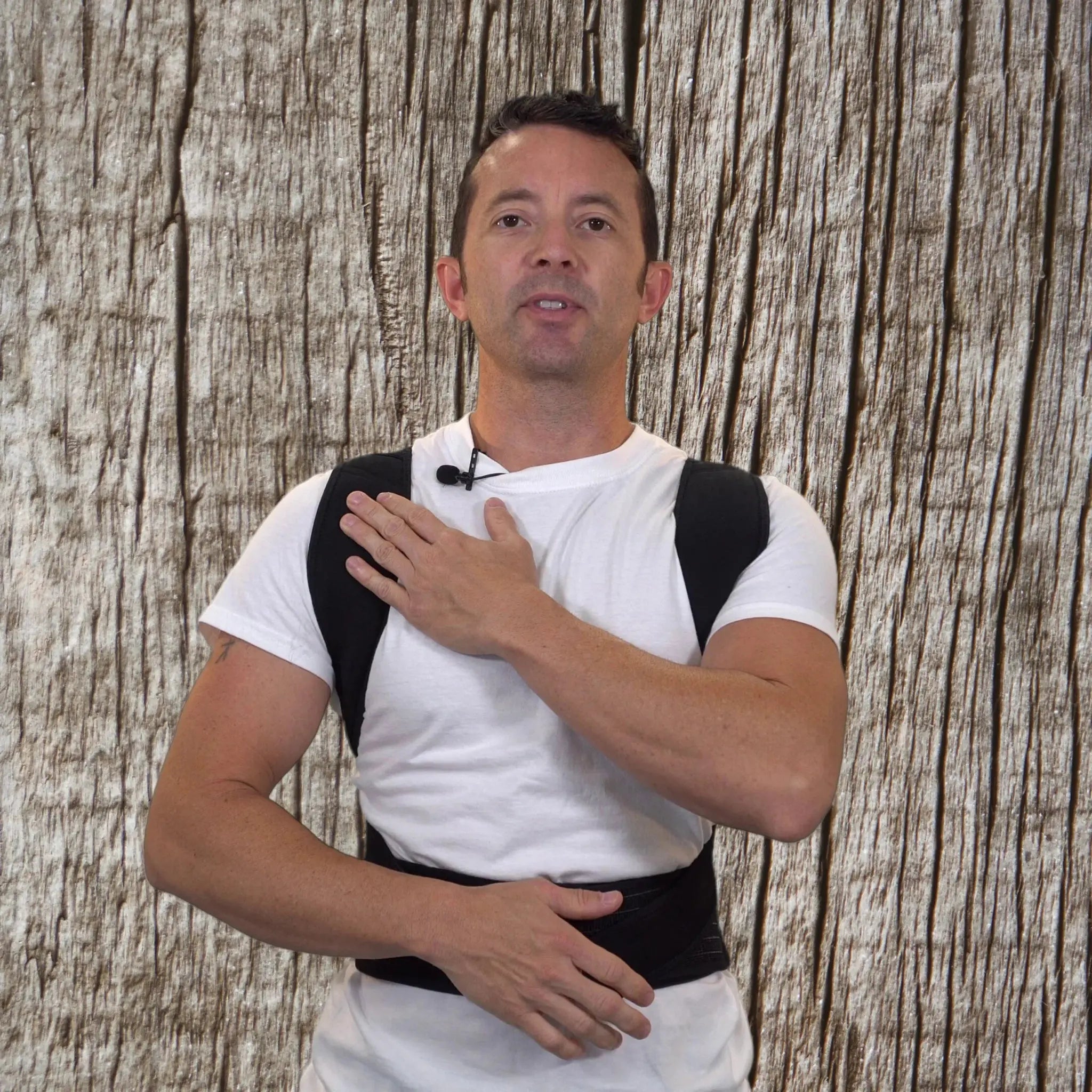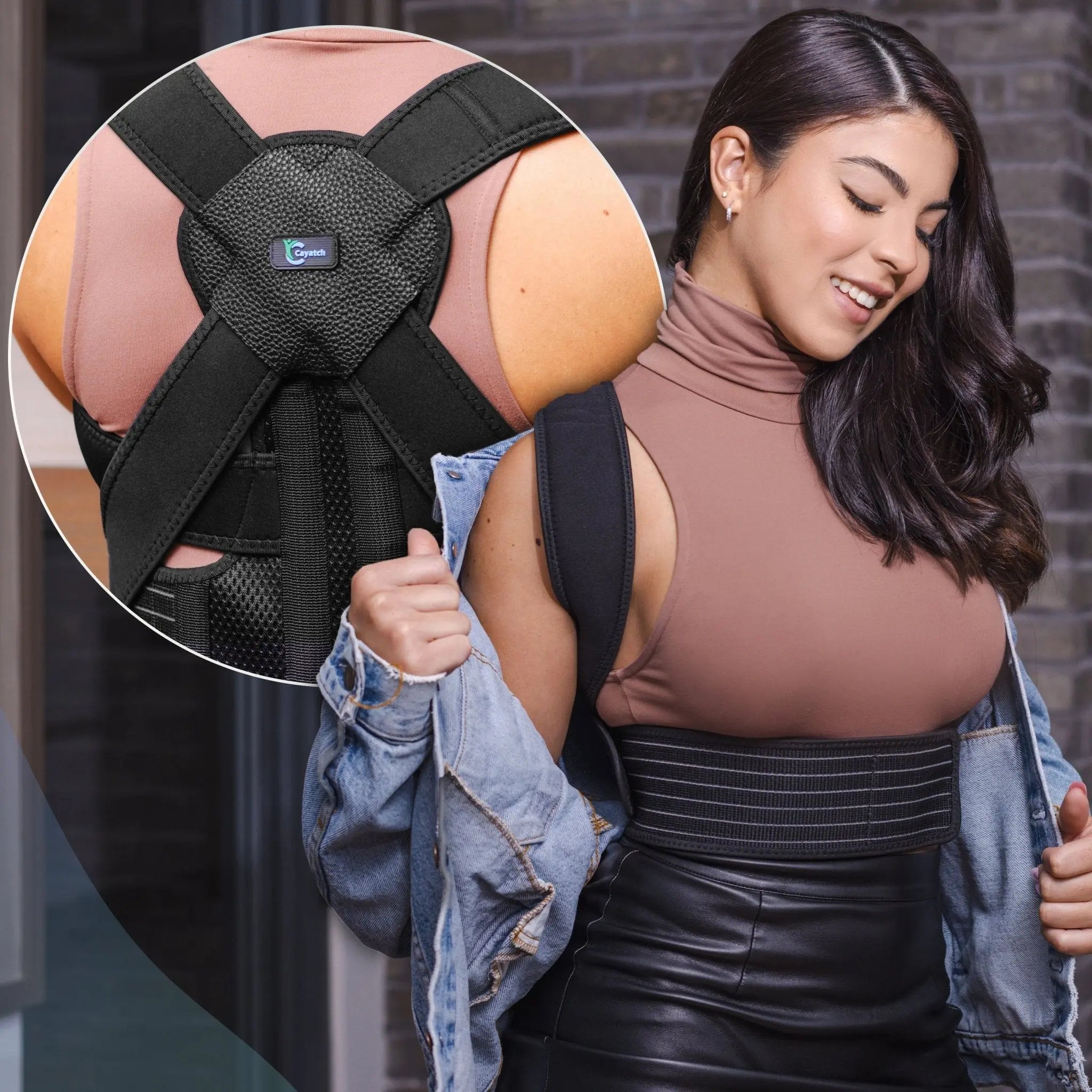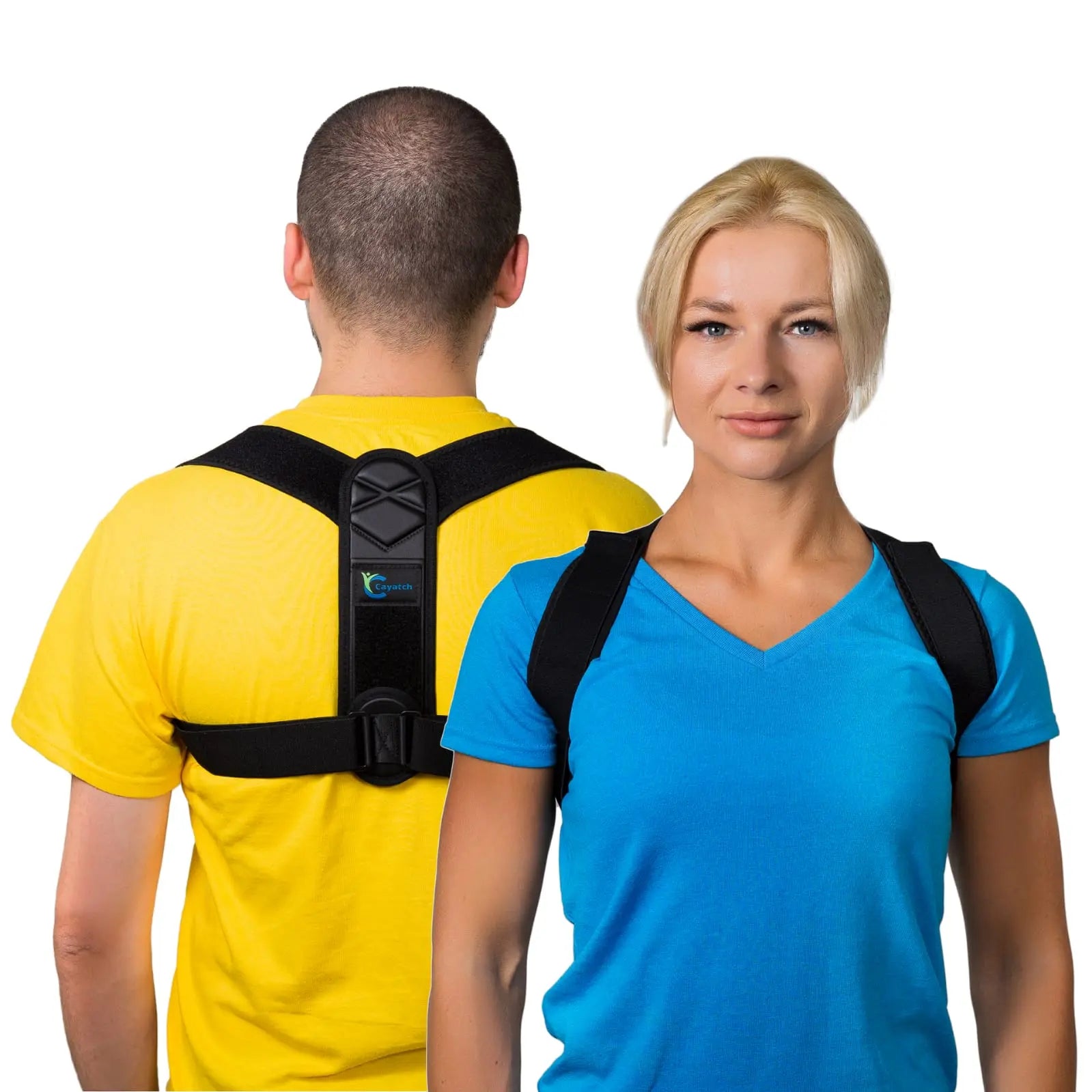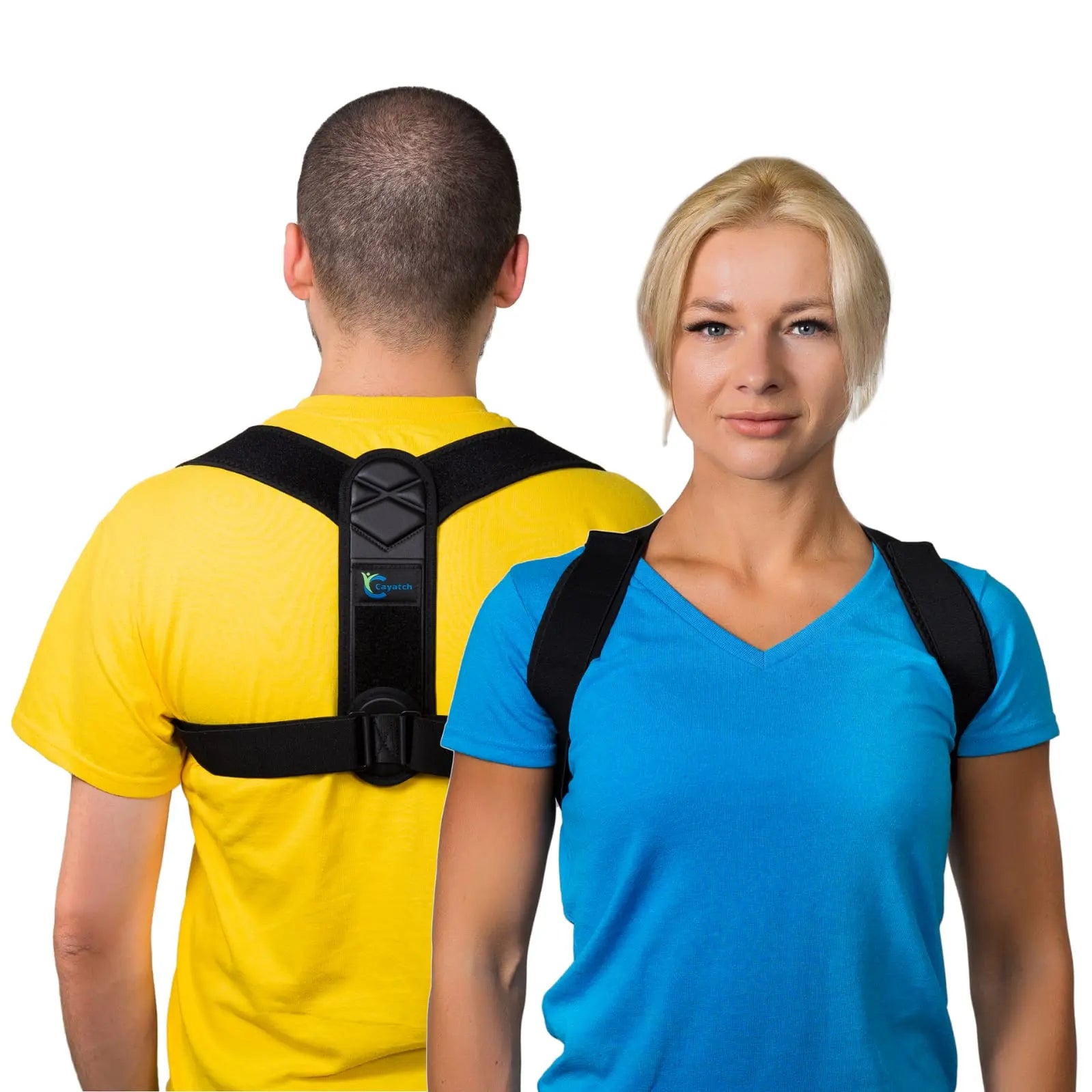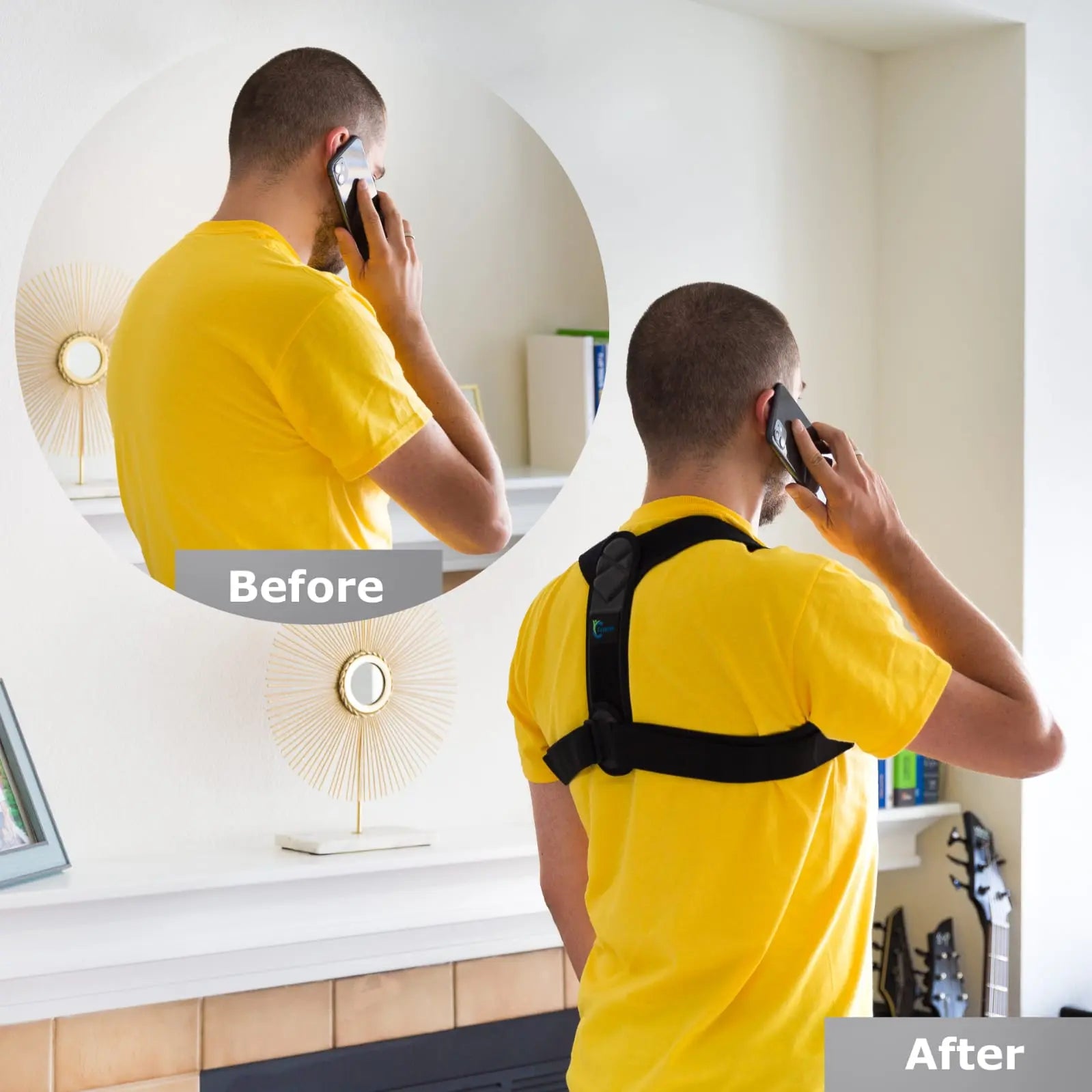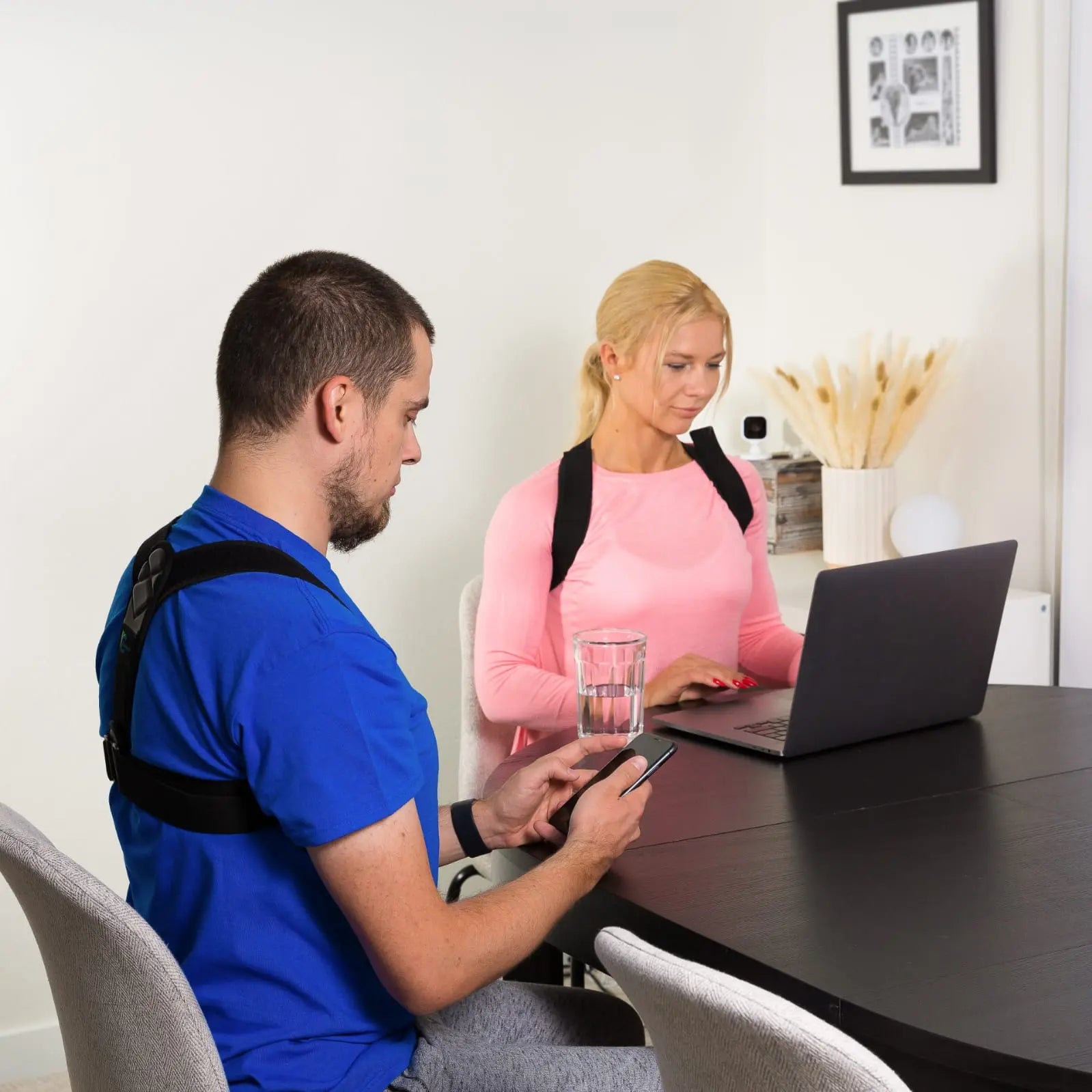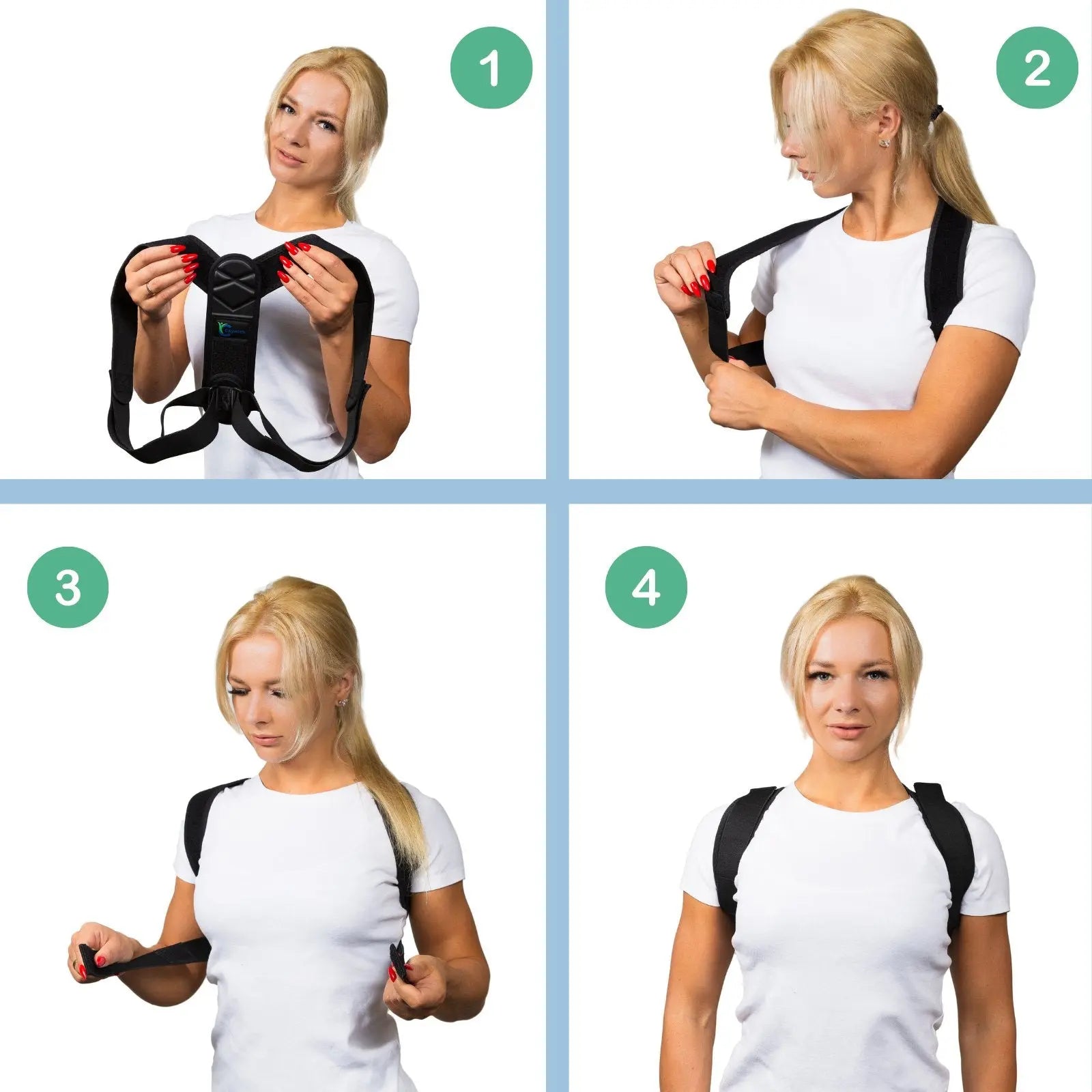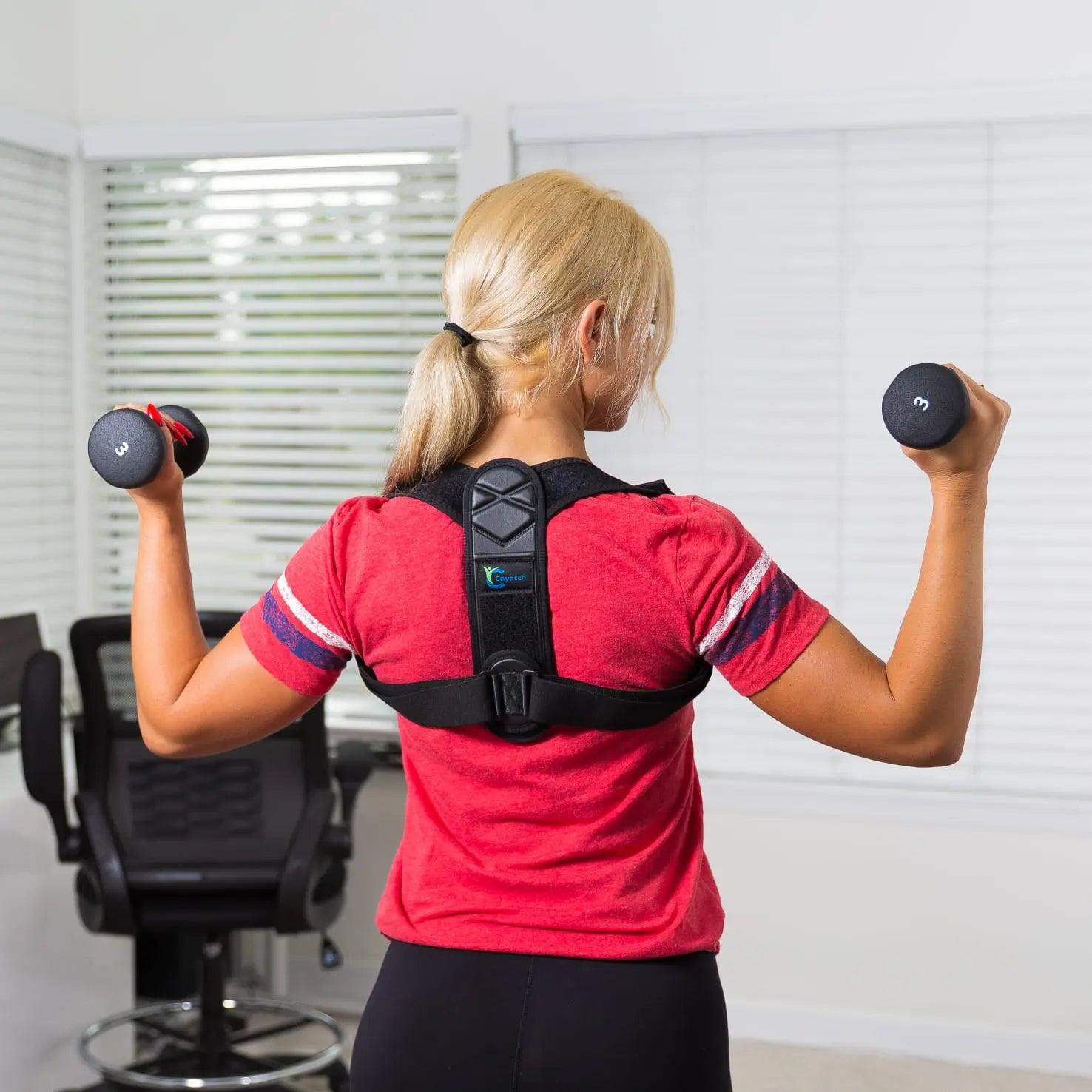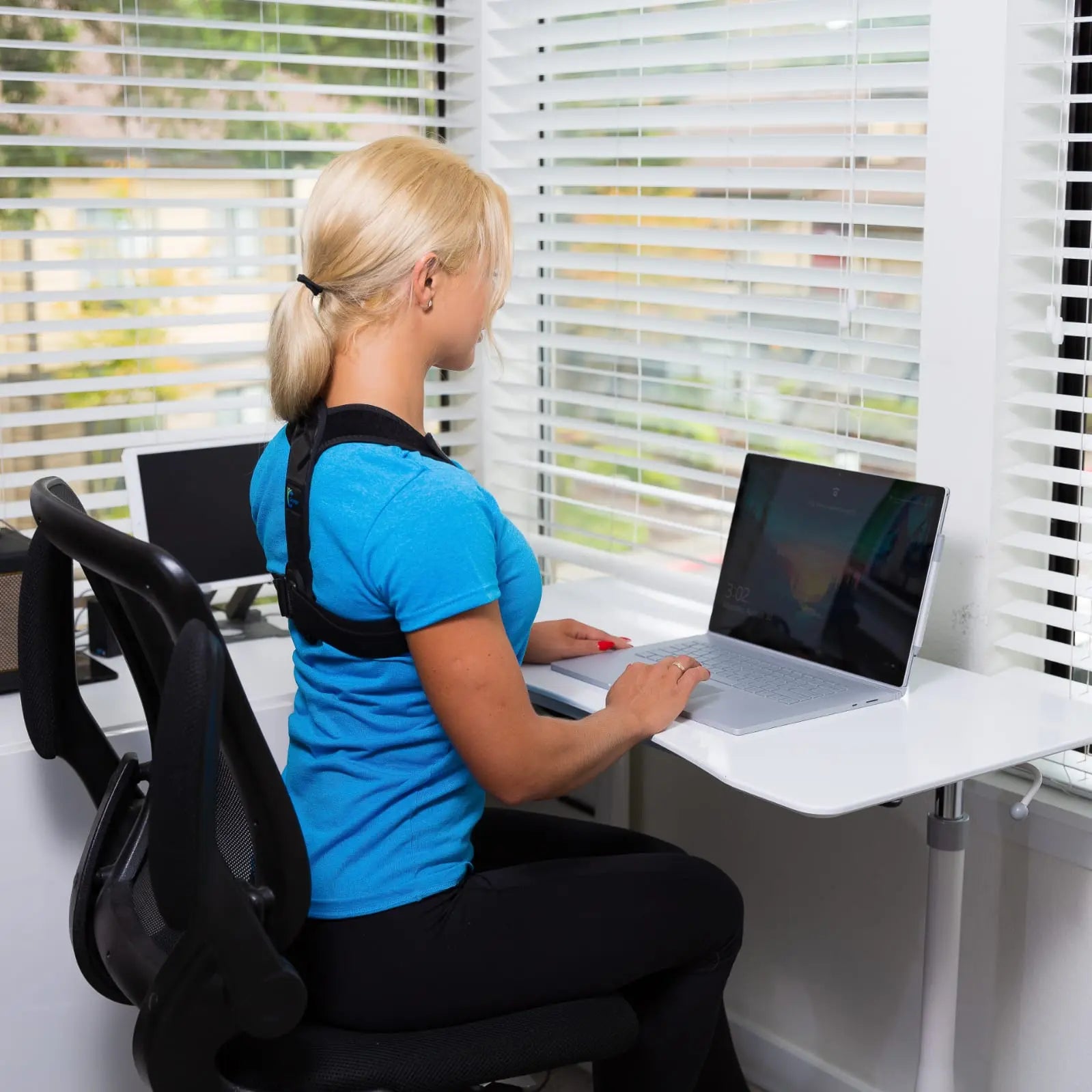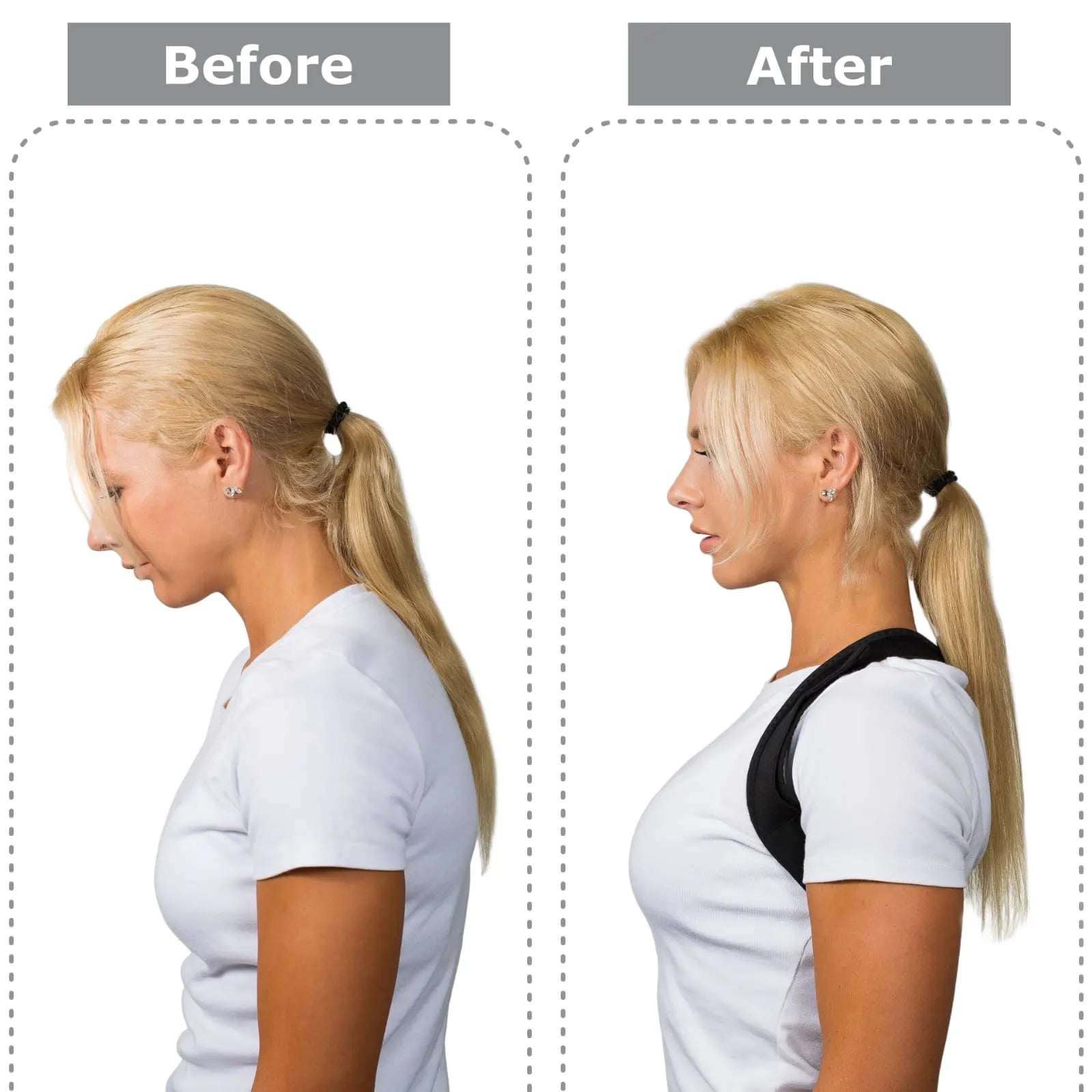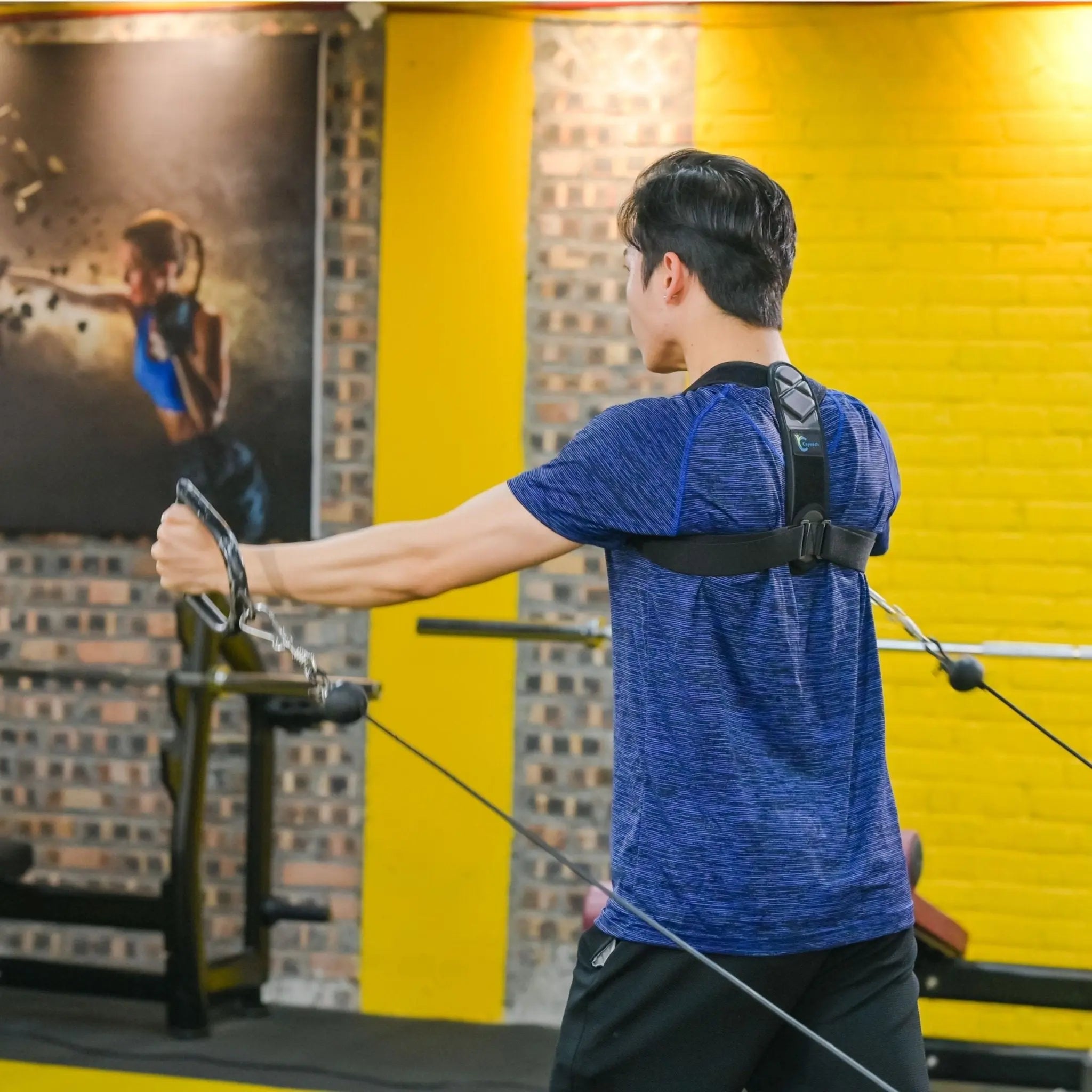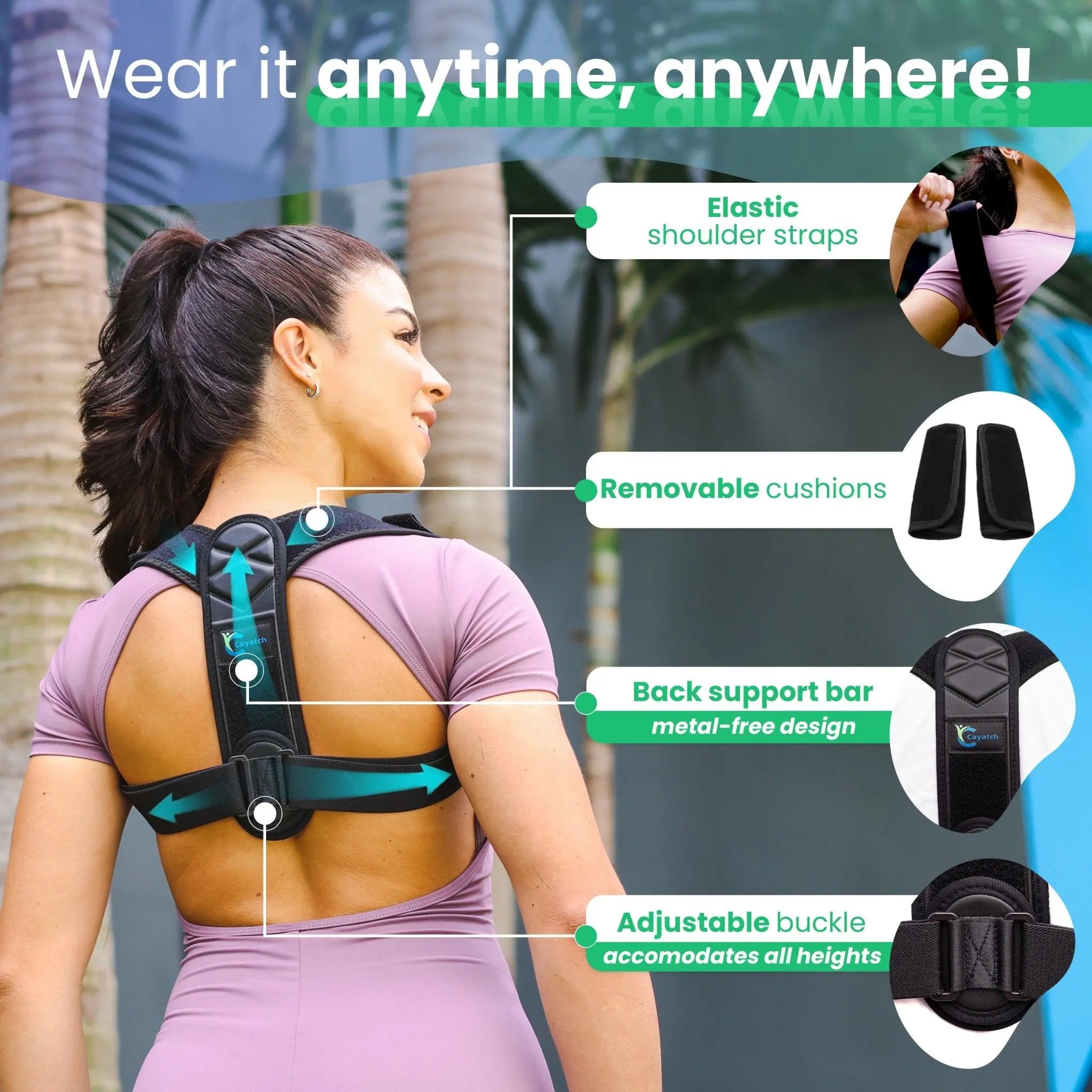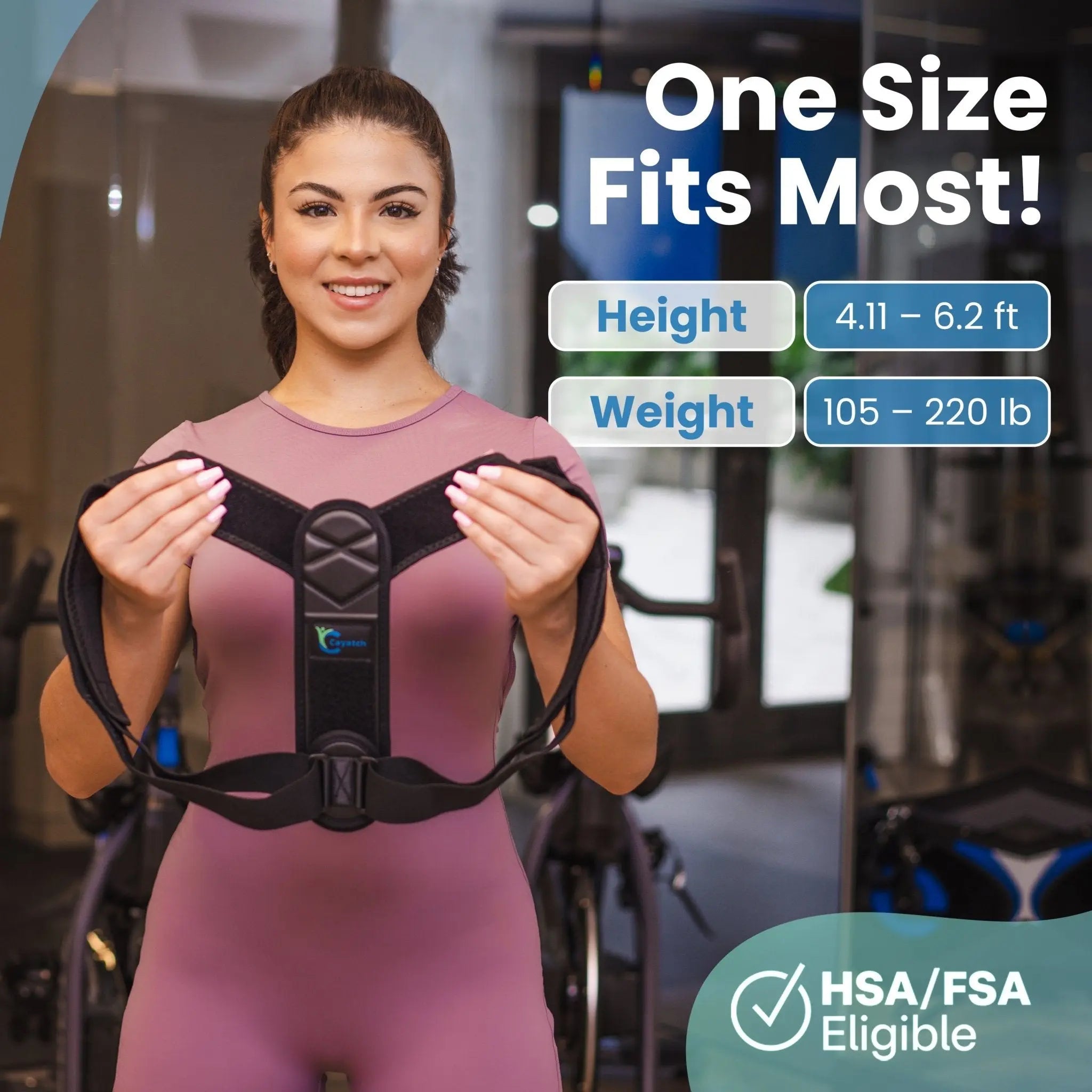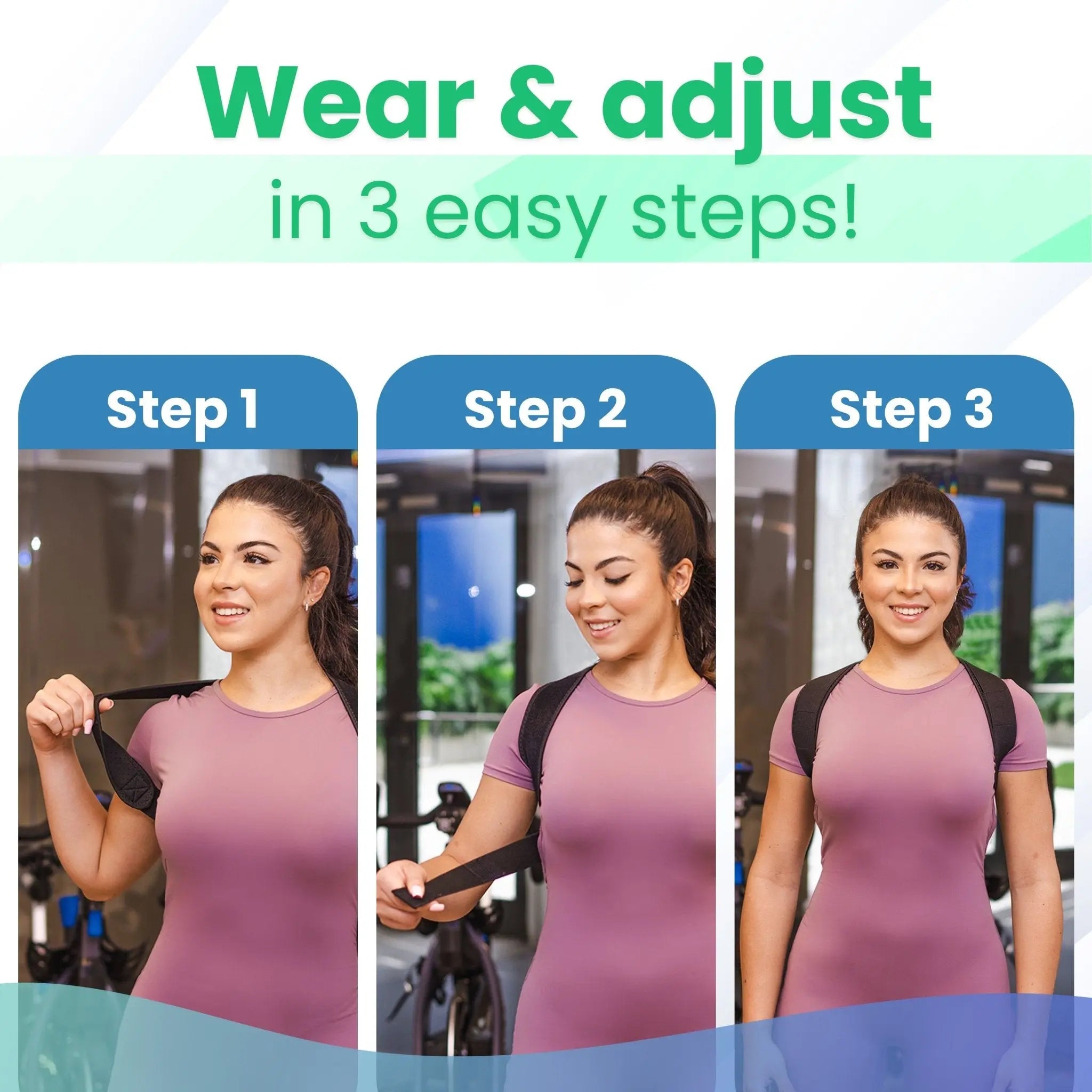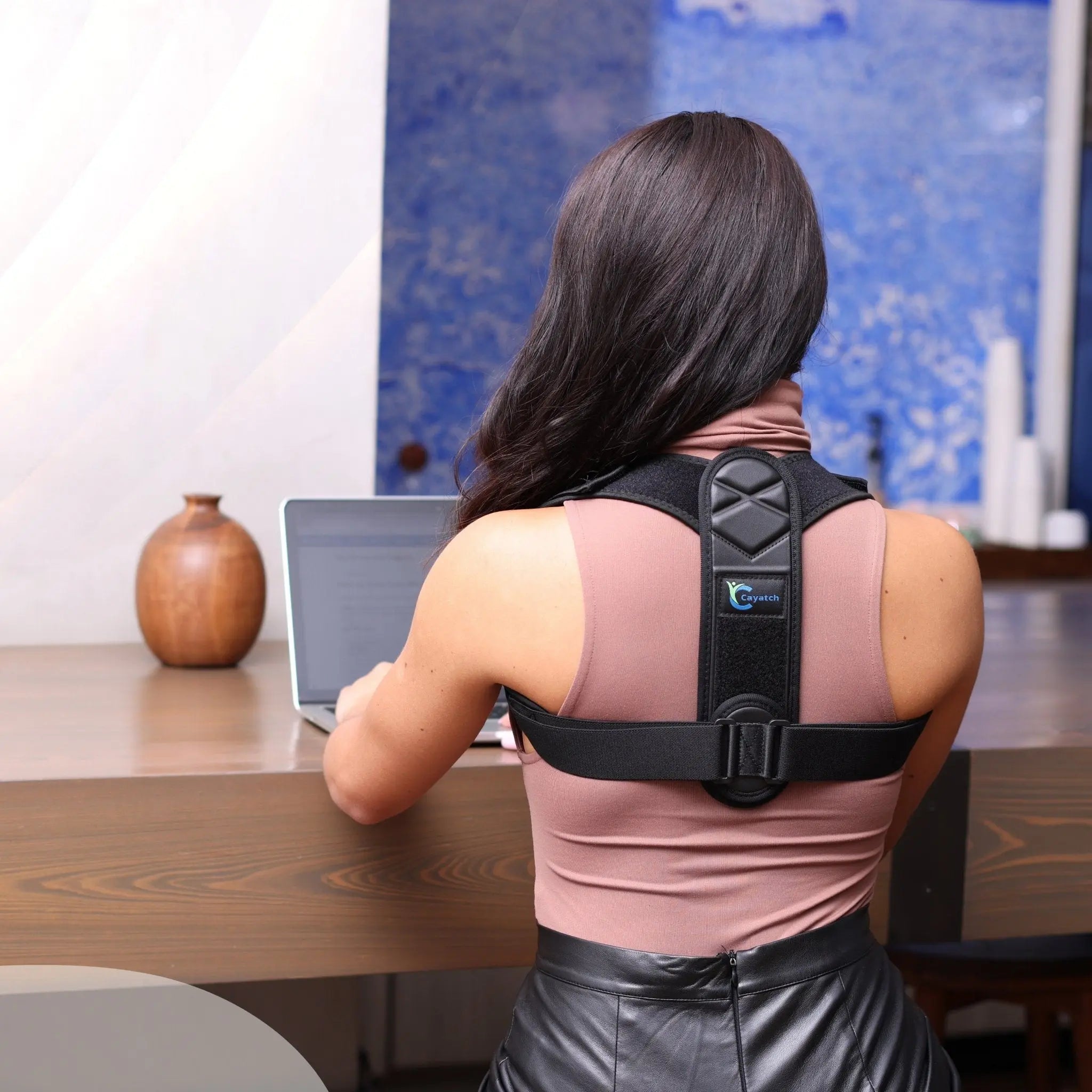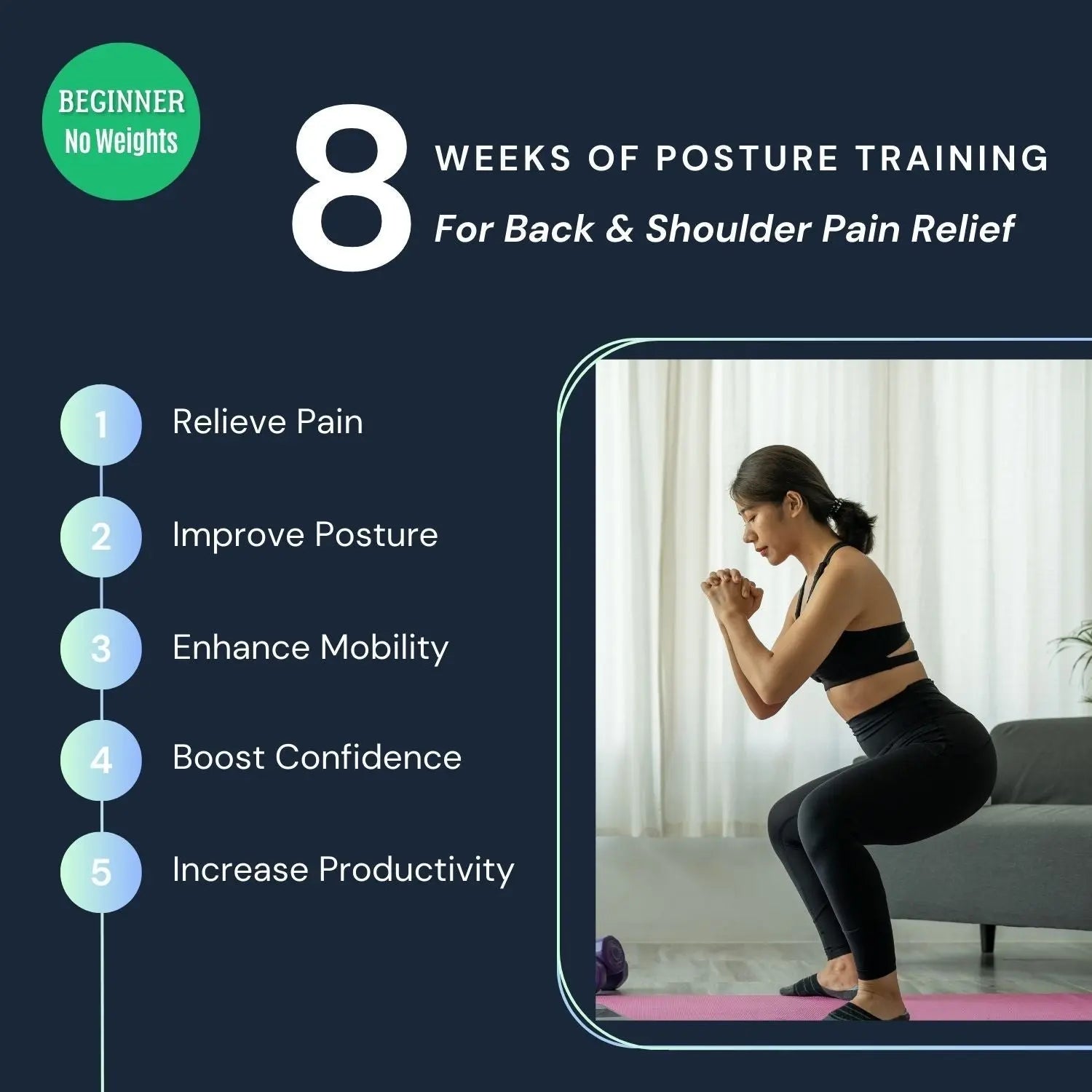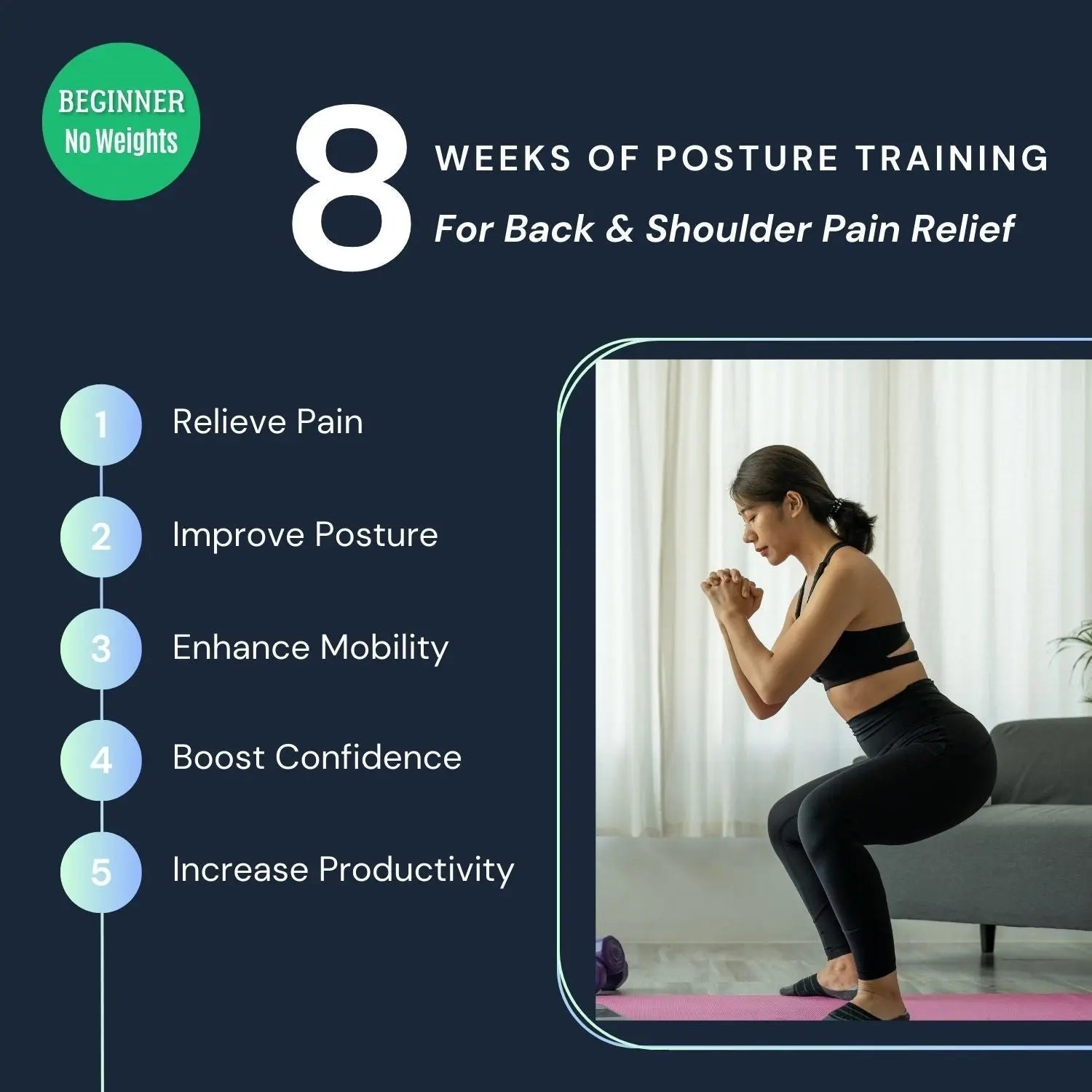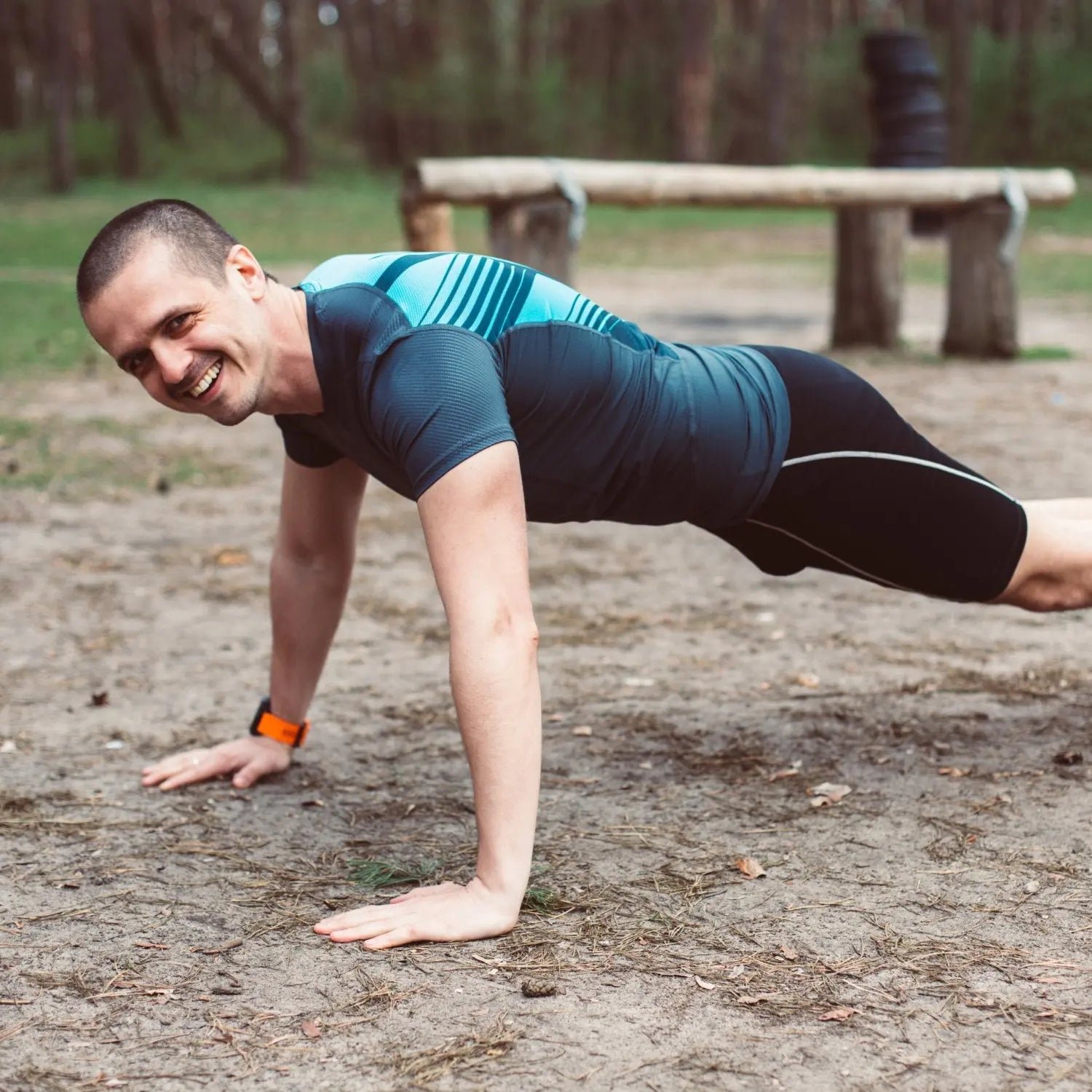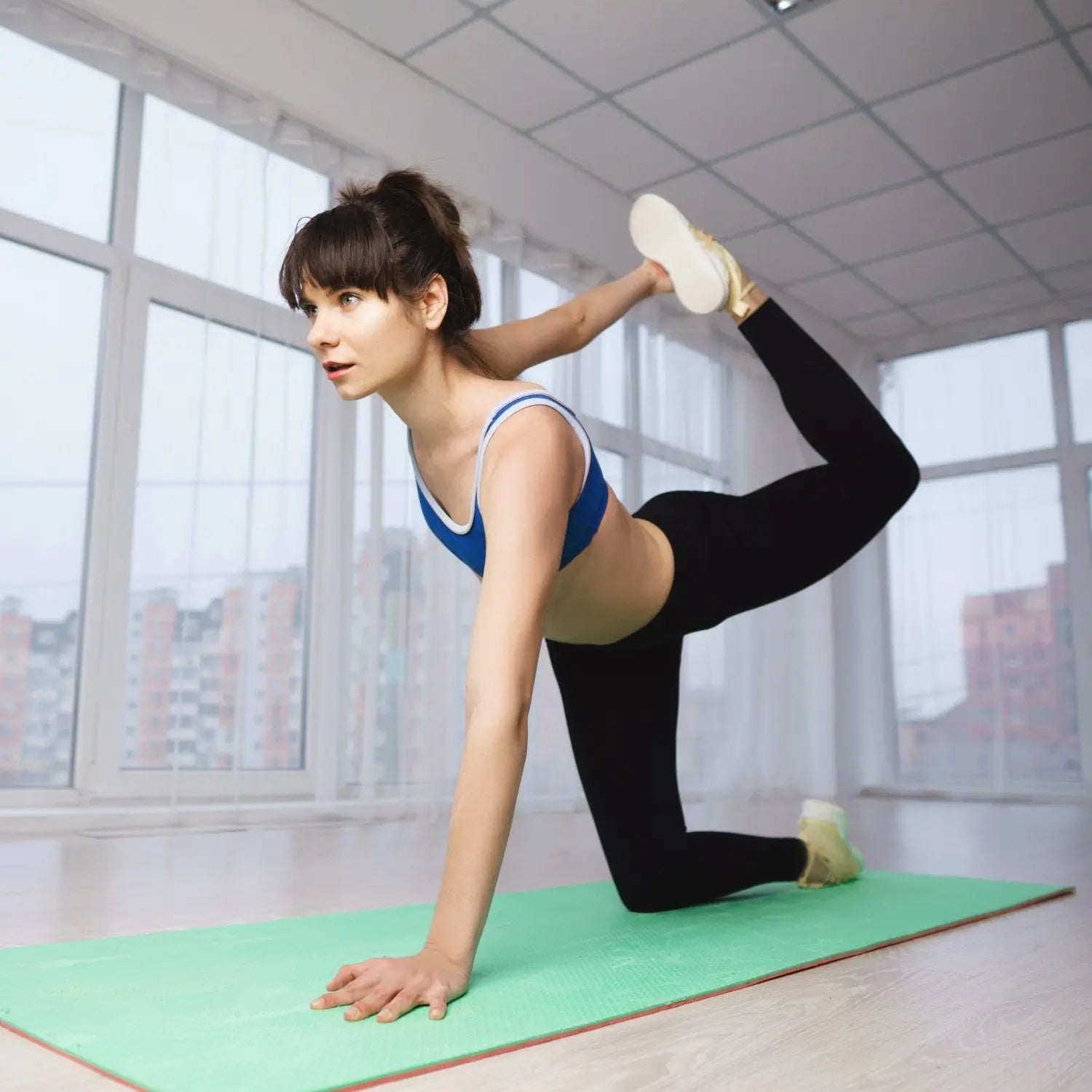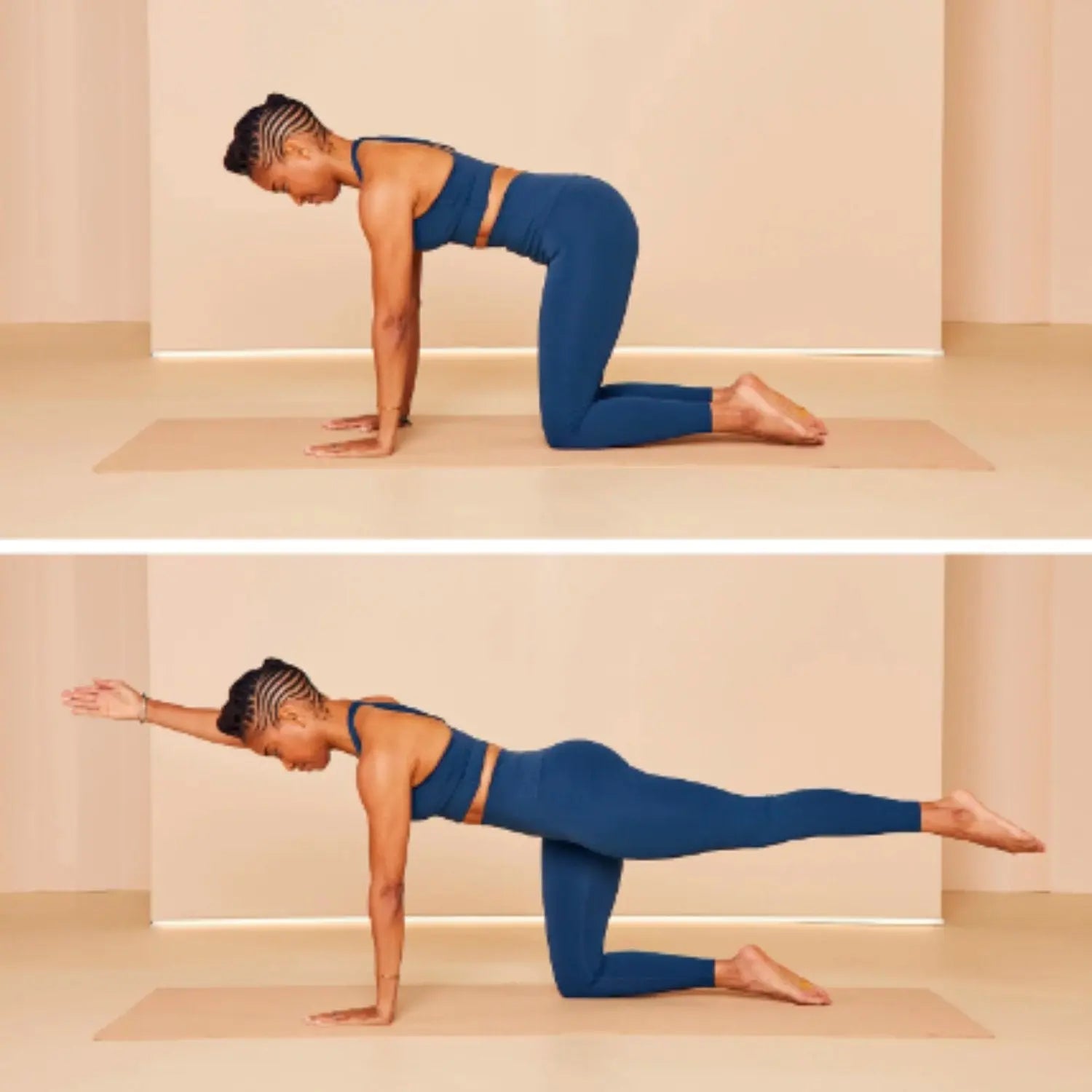8 Common Posture Problems and How to Fix

The impact of your posture on life is remarkable. Good posture enhances sports performance, promoting a healthier appearance, and boosting confidence. While, poor posture increases the risk of chronic health conditions, leading to significant pain.
Generally, postural problems frequently appear in childhood, increasing in adulthood. Surprisingly, over 65% of children and adults exhibit improper sitting and standing habits, according to a study.
This comprehensive guide shares the causes of common posture problems. Also, we shared the tips and exercises to fix them. Keep reading.
8 Most Common Posture Problems, Causes and How to Fix
“Maintaining proper curvature is crucial to have a proper posture”, says Dr. Matt Tanneberg.
Let’s look at the prime causes of poor sitting and standing habits. The causes will help you find in the right track by following the mentioned tips and exercises.
1. Rounded Shoulders

Rounded shoulders refers to the forward and slouched positioning of the shoulders, disrupting the spine's natural alignment. This poor habit can lead to muscle imbalances, causing pain and discomfort.
Causes
- Prolonged sitting, poor ergonomics: Strains shoulders, disrupts alignment, promoting rounded shoulders and postural issues.
- Insufficient upper back exercises: Weakens muscles and fails to support proper shoulder positioning, leading to rounding.
- Weak scapular stabilizers: Inadequate strength causes shoulder instability and contributes to rounded shoulders.
- Tight chest muscles: Pull shoulders forward, causing misalignment and promoting a rounded shoulder appearance.
- Poor posture during electronic device use: Frequent slouching exacerbates muscle imbalances, worsening rounded shoulders.
Tips and Exercises to Improve Rounded Shoulders
- Mindful posture: Consistent awareness prevents slouching, enhancing overall alignment for better shoulder position.
- Breaks from sitting: Interrupt sedentary periods, reducing strain and promoting healthier shoulder positioning.
- Chest stretches: Minimize tightness, ensure flexibility and reduce the pull contributing to rounded shoulders.
- Wall angles, shoulder retractions: Target posture, reinforcing proper alignment, counteracting rounded shoulders with focused exercises.
2. Forward Head Posture

Forward Head Posture is the anterior positioning of the head relative to the shoulders. This misalignment strains the neck, upper back, and shoulders. Thus, you may feel discomfort and potential long-term damage to the spine.
Causes
- Forward Head Posture: Head leans forward, straining neck and upper back, disrupting overall spinal alignment.
- Excessive device use: Contributes to rounded shoulders and forward head position, stressing neck and shoulders.
- Poor ergonomics: Incorrect setups strain neck and shoulders, fostering forward head posture and postural issues.
- Weak muscles: The neck and upper back exacerbate forward head position, demanding strengthening exercises.
Tips and Exercises to Improve Forward Head Posture
- Eye-level device usage: Prevents strain, preserves proper head and shoulder alignment, and reduces forward head posture.
- Breaks for stretches: Prevents tension and enhances flexibility, counteracting the effects of prolonged sitting.
- Neck stretches and rotations: Improve flexibility, reducing stiffness and promoting a neutral head position.
- Upper back strengthening (rows, retractions): Targets key muscles, aiding posture correction, preventing forward head positioning.
- Chin tucks: Counteract forward head posture, strengthening neck muscles, promoting proper head alignment.
3. Hunchback

A hunched back, or thoracic kyphosis, involves an exaggerated upper back curvature. Such a misalignment affects sitting and standing habits, causing discomfort and muscular imbalances.
Causes
- Weak core muscles: Insufficient core strength contributes to instability, promoting a hunched-back habit.
- Poor ergonomics: Prolonged sitting in unsupportive positions strains the back, fostering a hunched appearance.
- Sedentary lifestyle: Lack of movement weakens back muscles, exacerbating the risk of a hunched back.
- Muscle imbalances, lack of exercises: Neglecting upper back workouts can lead to hunched back issues.
- Osteoporosis: Contributes to curvature changes in the spine, potentially causing or worsening a hunched back.
Tips and Exercises to Improve Hunchback
- Neutral spine: Avoid slouching, promoting a straight back and preventing the development of a hunched posture.
- Ergonomic furniture: Supportive chairs and desks aid in maintaining proper posture, preventing hunching over.
- Core-strengthening (planks): Fortify abdominal muscles, supporting the spine, reducing the risk of a hunched back.
- Upper back stretches: Improve flexibility, counteracting hunching by relieving tension and promoting a straighter sitting and standing habit.
- Mindful posture correction: Daily awareness prevents habitual slouching, fostering improved spinal alignment and preventing hunched-back issues.
4. Anterior Pelvic Tilt

Anterior Pelvic Tilt is a misalignment where the front of the pelvis drops. It causes an exaggerated arch in the lower back.
The postural issue strains the lower back, alters spine curvature. Moreover, it may lead to muscle imbalances and discomfort.
Causes
- Poor Sitting Habits: Prolonged sitting with poor posture strains the lower back, promoting anterior pelvic tilt and postural issues.
- Weak Glute Muscles: Weak glute muscles contribute to pelvic instability, exacerbating the risk of anterior pelvic tilt.
- Tight Hip Flexor: Your pelvis may get forwarded due to the tight hip flexors. It leads to an exaggerated arch in the lower back.
- Insufficient Core Strength: Insufficient core strength fails to support proper pelvic alignment, increasing the likelihood of pelvic tilt.
- Improper Exercise Techniques: When the exercise techniques are improper your muscle will become imbalanced. It promotes anterior pelvic tilt.
Tips & Exercises to Improve Anterior Pelvic Tilt
- Engage Regular Hip Flexor: Regular hip flexor stretches to maintain flexibility, counteract tightness, and promote pelvic alignment support.
- Core Strengthening: Strengthening the core ensures stability, aiding proper pelvic alignment and reducing anterior pelvic tilt.
- Glute Activation: Glute bridges and hip thrusts activate the glutes, addressing weakness and strengthening pelvic stabilization.
- Lower Abdominal Strengthening: Leg raises strengthen lower abdominals, assisting in core support and pelvic alignment.
- Proper Pelvic Positioning: Pelvic tilts encourage proper positioning, reinforcing muscle engagement for improved pelvic alignment.
5. Swayback Posture

Swayback Posture, or hyperlordosis, involves an excessive inward curve of the lower back. Such a deviation places undue stress on the spine, leading to discomfort, muscle imbalances.
Causes
- Weak Abdominal Muscles: It compromises core stability, contributing to the development of swayback issues.
- High Heel Shoes: Regular high heel usage accentuates lumbar curvature, worsening swayback by impacting lower back alignment.
- Prolonged Standing with Poor Posture: Prolonged standing with poor posture strains the lower back, fostering swayback and discomfort.
- Poor Ergonomic Setups: Poor ergonomic setups contribute to postural issues, including swayback, by encouraging improper spinal alignment.
- Excessive Arching During Exercises: Excessive arching during exercises creates swayback. It is stressing the need for balanced and controlled movements.
Tips and Exercises to Improve Swayback
- Supportive Footwear: Always wear supportive footwears. They minimize strain. Also, avoiding high heels prevents swayback issues.
- Maintain a Neutral Spine: Maintaining a neutral spine during prolonged standing causes stress, promoting overall well-being.
- Planks: Abdominal exercises like planks strengthen core muscles, supporting spinal alignment and swayback prevention.
- Stretching Hip Flexor: Hip flexor stretches to reduce lower back tension, aiding in maintaining a neutral spine and preventing swayback.
- Posture Awareness: Mindful posture correction during daily activities fosters better awareness, preventing and correcting swayback problems.
6. Kyphosis

Kyphosis refers to an exaggerated forward rounding of the upper back, creating a hunchback appearance. It impacts spinal alignment, reducing mobility, and potential respiratory complications.
Causes
- Poor Posture Habits: If you have poor sitting and standing habits, kyphosis is unavoidable. So, having a mindful postural awareness is important.
- Osteoporosis: Osteoporosis exacerbates kyphosis, as weakened bones contribute to the forward rounding of the upper back.
- Improper Spinal Support: Prolonged sitting without proper spinal support strains the upper back, promoting kyphosis-related postural issues.
- Weak Upper Back Muscles: It compromise supports, causing kyphosis development and impacting overall spinal alignment.
- Forward Head Posture: Excessive screen time and forward head posture contribute to kyphosis.
Tips and Exercises to Improve Kyphosis
- Doing Regular Upper Back Stretches: Regular upper back stretches enhance flexibility, counteracting stiffness and promoting better spinal alignment.
- Using Lumbar Support: Proper lumbar support during sitting maintains a neutral spine, preventing strain and encouraging healthy posture.
- Upper Back Strengthening Exercises: Rows strengthen the upper back, improving posture and reducing the effects of kyphosis.
- Chest-opening Stretches: Stretches like forward rounding provides flexibility and preventing the impact of kyphosis.
7. Lordosis
Lordosis is an excessive inward curvature of the lower back, creating a pronounced arch. Such a postural issue tilts the pelvis forward, leading to an unnatural spine alignment. Moreover, it can potentially impact mobility and organ function.
Causes
- Weak Core Muscles: Weak core muscles contribute to lordosis, emphasizing the need for core-strengthening exercises for postural support.
- Poor Sitting and Standing Habits: Poor sitting and standing habits contribute to lordosis, highlighting the importance of maintaining proper posture.
- Excessive Lordotic Exercises: Excessive lordotic exercises cause the issue, highlighting the necessity of balanced and controlled workout techniques.
- Obesity: Factors like obesity and certain medical conditions contribute to lordosis, emphasizing the need for holistic health management.
Tips and Exercises to Improve Lordosis
- Core Strengthening Exercises: Make your muscles strong by doing some core strengthening exercises. These exercises provide essential support and minimize the risk of lordosis.
- Weight Reduction: Maintaining a healthy weight reduces excess strain on the lower back, preventing lordosis-related issues.
- Pelvic Tilts: Pelvic tilts encourage a neutral pelvis, fostering proper spinal alignment and reducing lordosis risk.
- Ensuring Abdominal Exercises: Abdominal exercises like planks strengthen the core. The exercises promote stability and preventing lordosis-related postural problems.
8. Uneven Shoulders
Uneven shoulders, or shoulder asymmetry, involve an imbalance in the height or position of one shoulder relative to the other. It can lead to muscle imbalances. Moreover, it impacts overall posture and body alignment.
Causes
- Imbalanced Upper Back Muscle: Upper back muscle imbalances contribute to uneven shoulders, emphasizing the importance of targeted exercises.
- Poor Ergonomics: Poor ergonomics during activities strain shoulders, promoting asymmetry; proper positioning and breaks are essential.
- Unequal Shoulder Muscle: Unequal shoulder muscle development fosters imbalance, highlighting the need for focused strength-building exercises.
- Scoliosis: Spinal conditions like scoliosis affect shoulder alignment, necessitating tailored exercises for improved symmetry.
- Incorrect Exercise Posture: Heavy backpacks and improper exercise forms contribute to uneven shoulders, underscoring the importance of mindful habits.
Tips and Exercises to Improve Uneven Shoulders
- Balanced Backpack Weight: Evenly balance backpack weight to prevent shoulder strain and promote balanced shoulder development.
- Shoulder Blade Exercise: Shoulder blade exercises enhance muscle balance, promoting symmetry in shoulder development.
- Chest-opening Stretches: Chest-opening stretches reduce tightness, fostering flexibility and reducing strain on the shoulders.
Frequently Asked Questions (FAQs)
What causes poor posture?
Poor posture is mainly a result of our bad habits like slouching all day, not paying attention to our spinal alignment, or looking down at a smartphone. Consistency in exercises can improve posture conditions fast.
What are the effects of poor posture?
Poor posture can cause severe health hazards including muscle weakness, stiffness, a lack of mobility, breathing difficulties, improper blood circulation, and so on. It can also affect a person’s metabolism.
Is poor posture common?
Nowadays, the modern lifestyle has caused poor posture among people. Many people don’t even understand that they have poor posture until they face severe consequences.
Does bad posture affect growth?
Yes, you will appear shorter than usual if you have a poor posture like rounded shoulders. Over time, your height will be decreased if you don’t address the problem at the right time.
Final Words
The crucial message is sitting and standing habits significantly impacts overall health and well-being. Poor posture can induce pain, fatigue, and muscle tension. On the other hand, good posture aids in avoiding these issues.
Overall, through posture awareness and proactive health choices you can effortlessly reduce common health concerns. Moreover, you will have an improved well-being for the future.






















